ARTIST INTERVIEW: Kyle McDougall - Part 1 - Early Work & Transition
A wide ranging, three part conversation with Canadian photographer Kyle McDougall. Part 1 covers his early work and career, and his transition into creating the work that became An American Mile.
I originally released this conversation with Kyle as video last year. It’s quite a long interview, so I’m breaking up the written version into three parts. If you prefer to watch or listen to the video you can do that here:
Kyle and I go way back, so this is a bit a more of a back and forth conversation than a straightforward interview. I published his first monograph An American Mile in 2023, but he had already been involved in several Subjectively Objective projects before that. He was featured in Volume 56 of my Mini Monograph Magazine series back in 2017, and he also had an image in Observations In The Ordinary, the survey book I published in 2019. In addition to his photography, I’m sure lot of you are probably already familiar with Kyle's excellent YouTube channel as well. He has a Substack called
too.This is a pretty long conversation, but I think you'll find some really valuable insights in it. Part 1 covers Kyle’s early work and career, and the transition into creating the work that became An American Mile. The next two installments will contain an in-depth discussion about the actual making of An American Mile, and the projects Kyle's working on currently.
Noah Waldeck: First I wanted to set the stage by talking about your earlier work. So to start off, tell us a little about your background and then how you originally came to photography.
Kyle McDougall: I've been doing photography for almost 20 years now. I went to film school back in 2005, but shortly before that, I first got interested in photography. I think right when I was around 20, I made a move out to Western Canada. I'd always been interested in photography a little bit, but the landscape out in the Rocky Mountains really inspired me to go buy a camera while I was out there, and just start experimenting.
Basically it was always like something that I enjoyed a little bit, but it wasn't until I moved back home that I decided to go to film school. Partly because of an interest in photography, but I was also really interested in filmmaking as well. So I went to film school, and then when I graduated in 2007, photography just remained a passion for like the next 10 years. Something that I was absolutely consumed with and that I loved, and that I was constantly trying to grow and get better at. But it kind of lived beside my filmmaking career, just as this thing I would go and do purely out of passion, which was great. And I did that for about 10 years.
For that entire period, my focus was as a landscape photographer, again inspired by that living out in the Rocky Mountains. But also where I lived in Ontario, Canada, surrounded by forests and lakes. I just always really loved the wilderness. It was kind of a good excuse, you know, going out with my camera into these environments at times of day and in weather that I normally wouldn't. So yeah, it was about 10 years of doing (I guess) traditional landscape work. And for a large portion of that time, I absolutely loved it and was consumed by it.
Noah Waldeck: I can definitely relate as far as having photography be something that you really only do purely for pleasure, as opposed to something you're looking to make a living from. I decided a long time ago that I wanted to keep photography as something I only did for myself, which is why I decided to start a lab business rather than shoot commercially. For me, it really does allow making images to be something that you're always inspired by, something that you do because you're truly passionate about it.
I think you came to photography in a way that is really similar to a lot of people. Even though you had a background going to film school, you were really doing it just for yourself because you wanted to go out and make photographs. You sent me some examples of your early work before our interview, and I think it's going to be really interesting for everyone to see, because it is quite different for the work you're known for making now. So tell us a little about the motivation or the inspiration for making these classic style kind of landscape images that you were doing back then.
Kyle McDougall: Yeah, it's funny, you know, I obviously dug into the archives and sent you some of these images before we sat down for this interview. And it's almost like I kind of filed that part of my career away. I forgot it exists just because, like I said, it's something that I was really passionate about and loved for a long time, but that I eventually kind of fell out of love with.
Looking back on it now, I think for the majority of the time when I was making that work, one of the huge motivators was just this reason to get out, like I said before, into the wilderness, into these environments I loved, at times of day that I normally wouldn't. Say like going out into a dramatic landscape at 5 a.m. and checking the weather, and hoping that there's gonna be this dramatic sunrise. Just having these experiences that were unique. Then obviously trying to document them, and also make images that were quite dramatic, loud, and exciting. Sunsets, sunrises, mist and fog, you know, coastal scenes and all this stuff.
So there was this like thrill of the hunt almost. I can remember some of the trips I would do early in my career, where I'd go for like five or six days by myself to the East Coast of Canada. I'd have all these locations researched, and at end of the trip, I'd almost have this checklist. Like, okay, I got like 10 keepers, you know, 10 dramatic shots to add to my portfolio. So I think it was just a combination of really enjoying these environments, really having a love for the wilderness and the landscape, and then having this like exciting practice of going out and trying to make things that were kind of loud, and colorful, and exciting.
Noah Waldeck: I think a lot of people can relate to starting out in a similar way, really focusing in on the classic picturesque beauty aspect of the landscape. That's one of the first things a lot of people come to in photography, you know, the Ansel Adams type stuff. You’re like, “Wow, these are such dramatic looking scenes of the natural landscape, I want to make photographs like that too.”
Something I think is especially interesting about your career is that even though a lot of people start that way, you got much further with it than most do. Like you said, you made work like that for almost 10 years. So you really honed your craft in making these type of traditional landscape images. So what was it that set you off on a different path?
Kyle McDougall: Yeah, so for the majority of those, let's call it 10 years I was doing that type of work, I was consumed and I had ambitions to get better and better. You know, maybe gain recognition for my work and do different things. But probably the last two years, I started to experience, I guess call it like a lack of fulfillment. I was still enjoying the experiences, but even if I made an image that in the past I would have been incredibly excited about, I just started to really lack interest and fulfillment from them. And it took me a really long time to understand why.
For a two year period, I was just completely consumed on trying to fix the problem, trying to figure out “Why isn't this working anymore?” You know, I'm having success, I'm making images I would have loved in the past. It wasn't until 2017, I decided to do a trip out to Newfoundland on the east coast of Canada by myself. It's kind of like my last ditch effort to try and fix this, to get my love back for it again. I went out right as winter was ending, you know, incredible coastlines and icebergs and just like the perfect conditions. You couldn't ask for more.
And I remember leaving that trip so unfulfilled and so frustrated. Just honestly thinking that the solution was to maybe go and do something else. I just thought, maybe photography isn't for me anymore. I didn't for whatever reason, stop to think like, “Oh, maybe I should just try something else?” Like this isn't the only thing that photography is. But I guess maybe it’s just stubbornness.
I think we put ourselves in boxes at times. You know, you can kind of create this image of what you do and how you do it, and it can become difficult to shift. That was really when I started to lose interest over that period, and that was like the breaking point. That aligned with a trip that my wife and I decided to do a few months later. We wanted to make some changes. So we actually sold our house, and bought a truck and trailer, and we decided to go drive across Canada and the United States for a year.
We set out on this trip, and I obviously brought my camera gear. And for the first few weeks, I didn't touch my camera at all. Then I experimented a little bit as we got out into dramatic landscapes trying to do landscape stuff again. But it wasn't until like three months into the trip, we got to the West Coast of the US, Portland to be exact. And on a whim, I went and bought a film camera purely just because. Then I just started to go out and shoot.
It almost felt like this return to the start of my career again. You know, I hadn't shot film since school. There was so much I needed to learn. And I just went out with no expectations, no pressure, and purely went and did photography for the fun of it for that initial period of time. We can get into how An American Mile evolved from there afterwards, but that is kind of the turning point for me and what brought back some of the excitement and love for photography that I've been missing for a pretty long time.
Noah Waldeck: I think that story really offers a lot that people can gain from it. As someone who had already established yourself, you had this self image of “Kyle McDougall, classic landscape photographer.” Even once you didn't feel like that was what you wanted to be doing anymore, it was really hard to break yourself out of that box. Because you felt like, “Well, this is what I do. If I'm not doing that, what am I doing?” So it's interesting to hear that you tried for a couple years after you weren't interested in it anymore, to keep trying to make it work.
I think that actually could be something that relates to a lot of people. Not necessarily with their work in general, but perhaps with a specific project. Maybe you've set out saying, “I'm going to make this long-term project about this particular thing.” And then later you realize, I'm not really into making these images anymore. Maybe you keep taking a few trips and saying, “Well, I’ve got to keep working on it, it's not done yet. I need to go make more work to round it out, because it's not finished.”
But maybe it is finished. Maybe you've naturally come to the end of the line, and you need to move on to something else in order to keep yourself creatively fulfilled. I think allowing yourself to always be in a place where you're making work excites you is what keeps you happy to be making it. Specifically when it's not necessarily something you're doing for a living, but it's something you're doing because it's your passion.
Kyle McDougall: Yeah, it's honestly one of the most important lessons that I've learned in my career. I mean, I'd been doing that stuff for 10 years, but still I learned it somewhat early on. And it's really helped me since then moving forward with so many things. Just like you talked about, with projects, with so many things, just being willing to change.
I think it's obviously good to a degree to have consistency and stick with things. But there is an extreme you can get to where you're just like, “Nope, this is what I do.” There is this resistance to change. So it's really, really taught me, and helped me moving forward just with all sorts of different aspects, that if things aren't working, it's okay to try something different. Or even abandon things that aren't working. I definitely took a lot away from that.
Noah Waldeck: Yeah, I think the idea of kind of accepting some things have a natural ending can be a really useful lesson to learn. Getting back to where your path took you from there, talk about the turning point where you discovered the imagery of the American Southwest that ended up turning into An American Mile.
Kyle McDougall: Yeah, like I said, getting back into film, buying that film camera, you know, a 6x6 TLR. And I think the biggest thing for me is that it was the first time in a really long time where I felt this excitement about photography again. It almost took me back to the start of my career. Like where you go out shooting the most random stuff and not caring.
I can remember the early first few months of photography for me, like being so interested and curious. You know, going out and just like accepting that I didn't know what I was doing. Then playing around and messing with things on the computer when I got home. This period of time really kind of reminded me of that. Learning how to work with film again, and just documenting our trip as we went. Not waking up at 5 a.m. to try to go down to the coast to get the perfect sunrise or whatever, just shooting in very different conditions. A much more subtle approach and just very different than what I'd done in a long time.
I kept doing that for a bit and we eventually got down to the American Southwest. I just had this like five, six month period once we got down there of being so excited, like the complete opposite of how I'd been feeling for the couple of years before that. Just being so excited about photography again, having this new kind of approach and new interest, getting back into film. Discovering all these new artists, learning about this history to photography that I wasn't that aware of in the past. All these different bodies of work, and certain photographers who have become my favorites nowadays.
I think all of those things just combine to give me this like energy that I've been lacking for a long time. And that kind of coincided with us being in Nevada, Arizona, Southern California, all these places where there's this landscape that also just fascinated me so much. I think it was just a number of things that came together that led to me making images for a pretty long period of time where I guess you're in the zone. You know, when you're out there making work and things just feel right. You aren't really overthinking it, and you're shooting and just having fun.
That is really what this work was born out of. That was like the first six or eight months of making it, and then obviously a number of years after that with return trips. But it was that initial period of just this curiosity and love for things again that sparked it.
Noah Waldeck: I think that it's really great to hear that even someone who was as accomplished as you were, still felt like you had the opportunity to have a fresh start. Almost kind of come back to it like you did in those very early days of discovering photography. You allowed yourself the freedom to go back to that, and it ended up really turning out to be the most significant turning point in your career.
You ended up making work that still built upon the craft you had developed before, but you allowed yourself to discover what really excited you again. And that turned out to be the American Southwest. So once you discovered you were drawn to making that work that became An American Mile, how soon did you end up saying, “This is exciting, I have something here. I loved making this, now I want to turn it into a larger project?”
Kyle McDougall: Yeah, honestly, it took some time for sure. Talking about self-image and putting yourself in a box and stuff, even once I got into this phase of making this work and being consumed by it those first few months, I can still remember being so hesitant to share it. I've spoke about this before, and this sounds ridiculous. Maybe not hesitant exactly, but I also don't want to say nervous. Just thinking that I'm gonna put this out there and people are gonna be like, what is this?
Because again, I knew myself as this landscape photographer, and I'm shooting these dramatic landscapes and stuff. All of sudden it's like, here is this very mundane kind of shot of a power pole in the middle of an empty desert. It’s in the middle of the day, it's like the complete opposite of what I had done in the past. But kind of all that mattered to me at that point was this is just what I loved. I was enjoying the work I was making, it was fulfilling and I was excited.
Where I was at before that was the complete opposite. So it just felt right to move forward with. But what was so funny is that once I started to share it, this work (and where I've gone since) has been the most well received out of anything I've ever done. Which I think is important for me to reflect on, and also to mention at times, because I think it's just a good example of how we can get in our own heads about how good our work is or isn't. You know, oftentimes we're really quite wrong about that. So as we got to the end of that year-long road trip, I still tried to keep things pretty loose and not make any decisions right away. Because I wanted to maintain that, I didn't want to jump back into trying to make it into something too quick. I was just having fun with photography again.
But I think as that trip got to the end and I started to see a body of work build up, and I still had this excitement to go back and visit these locations again. That's when I knew, like okay, this is the new direction, this is what I want to do. And it set me down this path of obviously returning, and then making a lot of work, and then making it into a book eventually. But also, you know, the direction I'm going now and the projects I'm working on. It's all kind of snowballed from there, and really taken me in this direction that I could have never ever predicted before.
Noah Waldeck: That’s really interesting. I'm curious, what percentage of what ended up in the final book would you say was from the initial several months you spent shooting?
Kyle McDougall: That's a good question. I don't know if I could give a fairly specific number, but I will say quite a bit of it, which is interesting. I made a number of trips back over the next three years, and you know, not like month long trips out there, but I'd go back by myself for 10 days. Purely by myself in a rental car with the purpose of making images. So I did end up making a lot of work over these next trips.
But as I go through and look now, I would honestly say maybe 50% made it into the book. Maybe even more, maybe 60% from that initial trip. Which is pretty substantial when you consider that was six months of it, and then I made numerous trips back. But yeah, flow, right? Like sometimes you're just in the zone and things are working, and I think you gotta just embrace that as much as you can.
Noah Waldeck: Yeah, no, you were definitely able to capitalize on what you discovered, and you really did get into that flow or groove there. But I will also say that you did have a fairly long time to keep exploring it, by the nature of being on a year-long road trip. Maybe not everyone when they discover a new project, is going to be able to pursue it so completely right out of the gate.
But I do think the idea that you grabbed on and said, “I'm going to run with this new thing” is great, even though you were as you talked about before, hesitant to let that be your new photography persona. You were still thinking, “I'm the classic landscape guy. What's anyone going to think about these high key desert at noon landscapes?” But you were excited to make them. And so you followed the thread.
You decided not to let yourself say “I got to stop making these. These aren't really my thing.” You really ran it down, and so it's great that you were able to have that opportunity to get such a good start into making the project. And then from there, you really start to round it out with the additional trips you talked about over the next few years. Now though, let's talk about when did you know that you wanted An American Mile to turn out to be a book?
Kyle McDougall: Yeah, so think what was interesting for me, is not only was this a period of time where I discovered a new interest, and new direction and approach with my work. But like I said before, in starting to make this work, at the same time it introduced me to this entire world of photography that I didn't know anything about. Like I said, from specific artists or specific photographers that are incredibly well known, to different movements and different styles and just to this history of photography that I really didn't know anything about. That was exciting. You know, Stephen Shore obviously is incredibly well known, but up until that point I wasn't familiar with his work.
It was such an eye-opener for me that there was this way of working that was so different from what I'd done in the past. So I think obviously making these images took off and I kind of ran with it. But at the same time, as I started to immerse myself in these other worlds. I started to get into photobooks and really immerse myself in the world of different photographers and different books, and just the different possibilities of what you could do with your work. I think that combined with this body of work starting to grow, I started to see that as the goal to aim for.
Like, I love the idea of like making this work, and then finalizing it and putting it out in book form. Then the project's done. Because with the landscape work I did in the past, it's almost like I just had this running collection of themes. And I'm like, “Am I just gonna make forest images for the rest of my life?” There's no way to finalize or cap anything off. So there was a huge appeal for me with that as well.
Just knowing that I could go to the Southwest and I could shoot for the next 50 years, and probably have like a pretty good time doing it. But it's nice to move on. You know, getting to a point where I felt like, “Okay, I like what's here.” Then publishing it in book form feels like, “This is done now, and I can move on to what's next.”
Noah Waldeck: You know, I actually see this on people's websites a lot. They'll have their images categorized as landscape, street, people, portraits, stuff like that. It's just this one broad thing, which actually does have this kind of historic context. A lot of older photobooks (mainly before the ‘70s) were more like that, where it was just a collection of an artist's work kind of throughout their career and all the different stuff they did. But since the ‘70s, talking about Stephen Shore, or William Eggleston, or Joel Meyerowitz, or Joel Sternfeld for instance, photobooks have really started to be thought of more as vehicle for project-based work. And it started before that really, those are just the big color photographers I’m thinking of.
Making work where there’s a specific project, and doesn't just fall into the really large buckets, does actually give you this certain type of freedom (even if it's a little more limiting). Because it allows you to say, “I'm going to make images about this, and once I feel like I've made enough, and I've said what I wanted to say, I’m free to move on.” You don't have to have them always be this long running thing.
Like you said regarding your earlier work, if you kept doing it for 50 years, you'd have more and more beautiful, picturesque images of the Canadian forest. But would you really ever get to the point where you were like, “This project is wrapped up?” Not really, because it wasn't really a specific project you were working on. You were just kind of generally making work. Having a specific project allows you the freedom to get to a point where you feel like you’ve done enough, and then you can move on to the next thing. I think that's a really good lesson for people to learn.
Kyle McDougall: As you're talking about this, it's made me think that maybe that's a huge appeal. Obviously, there's a lot of things that appeal to me about this work that I'm doing now, but where I was before was this essentially open-ended landscape work that just dragged on to the point where I wanted to quit. So maybe, yeah, a big appeal of this new stuff that I'm doing is like this nice contrast to how I used to work. Where it's like, “I really enjoyed this, but now it's done.”
You know, I had a really good time working on this for four years or whatever it was, but it's now I'm doing work in North Wales, black and white, large format stuff. I'm doing a few other projects that I'm playing around with too. I'm going to go on to what's interesting me next. And obviously they all have similar feel to them in terms of like approach. But it is giving me an opportunity to not get stuck with that one thing for a really long time again, to the point where I just wear it out completely.
Noah Waldeck: I think that there's other art forms that work in a similar way, I definitely think music can be similar. When you make an album, you’re trying to make these songs that all fit together as a group. Then after you put it out, maybe on your next album you've moved on to a little bit of a different sound. You can explore something different. You don't have to be just making more and more of the exact same throughout your career.
I think that's actually one of the really nice things about photography specifically as an art form, is that it really works best in the form of a series or a project. I mean yeah, you can have all the images you've made over your career, and there's probably going to be a lot of similar threads. Even if you've explored different camera formats, or black and white and color. You shot some stuff 35 point and shoot, and you shot some other stuff 4x5 or 8x10. Maybe there are a lot of different things you did. And when you look back on it all, it's very possible that you'll see all of this stuff is clearly from the same person, someone who consistently has the same vision. But by having those individual projects, it allows you to put all of your focus into that for a while. And then when it's naturally wrapped up, to move on.
I think another important takeaway is that even though you spent four years making An American Mile, not every project is something that someone's going to want to spend four years on. Maybe it's a project you end up wanting to spend a couple of weeks on. And then you feel like, “Okay, that was all I had to say. I’m ready to move on.” It's not going to be the biggest project. You’re probably not going to make a huge book out of it. But that's okay. You still got something worthwhile out of it.Then you can be moving on to the next stage of your work.
Kyle McDougall: Yeah man, I agree. The one thing I wanted to add with this transition phase that I think is really important, is that looking back, it's easy for us to get attached to things that we have done for a long time and that we know. Almost like you're protecting your ego a bit, right? Because it's like, “If I stick with this thing, I know I'm pretty good at it and it's working.”
Honestly, one of the biggest challenges for me letting go of that landscape work and going into this stuff was being okay with, I don't want say being a beginner again, because I'd obviously been doing photography for a long time, but it felt like I was entering a new world. For a really long time doing this work, it was easy to almost like feel like an imposter a little bit. I don't want to say imposter syndrome, but I just felt like I was stepping into a bit of a new arena where I had a lot to learn. And it was more intimidating for me than just sticking with what I knew of landscape photography in the past and having my voice and stuff.
So that's one thing that I try and keep in mind as well. I think it's important to always keep on top of making sure you don’t put yourself in a box. Just be okay with knowing that you're constantly gonna have stuff to learn and almost embracing that. Stepping into new arenas where there's this entire new world that you're unfamiliar with, where you have to, you know, learn a lot of things again.
Noah Waldeck: Yeah, absolutely. I didn't mention it before, but I think there’s an interesting related aspect of that process. Maybe you came to it somewhat backwards, because you started making the work first, and then you started discovering these other artists that had already trodden the paths that you were exploring for the first time. But I do think that looking at other artists work is one the best ways people can inspire themselves to find new avenues in their own work if they’re feeling a little bit stuck. Even as an inspiration to find your own voice and where you fit in, particularly when it comes to landscape work.
Because unlike some other forms of photography, which are always about “What's the new thing, or what’s the trend right now?” Landscape photography in general isn't really like that. The traditional landscape photography that you were doing, I mean there's a really long tradition of that type of work which even predates photography. But now there's also a long tradition of people making more contemporary landscape work, which is about the built world and not just the picturesque unspoiled environments.
So anyone who's operating in the contemporary landscape field, nobody's reinventing the wheel. You're always doing something that someone else has already done before to some degree, but that doesn't make so you can't make good work too. You just have to find out, “Where do I fit in with that tradition?” So looking at the work of other photographers, and looking at other photobooks is such a valuable resource to find your place in that. It can also provide a lot of inspiration as you get into it too.
Kyle McDougall: Yeah, I agree completely man. I think regardless of what it is or how many times it's been done, I think at the root of it, for me of what's most important and where everything starts is just like, “Does this interest me?” You know what mean? Like, “Does this thing excite me?” And yeah, as for the work in this book, you know, obviously the American West has been photographed endless amounts, and it’s especially popular nowadays.
But the photographs I was making for this for the first, three, four, five months, purely just based off of like exploring these landscapes and stuff that excited and interested me. At that point, I wasn't consuming much of what was out there already. So I think regardless of anything, you got to just like stick with first and foremost, whatever excites you, and feels right, and interests you.
Noah Waldeck: Yeah and I like that point specifically, because it seems like pretty much everything has already been done before. The thing you have that's valuable to contribute is what interests you personally. You know, take the American West, it very well-trodden subject matter. And again, it's particularly popular now. But even as a curator and someone who loves photography, I love to see different photographers' images made in the same location.
Because you always get that little sliver of their own personality and their own vision in there, as two different people photographing the same place. They’re both drawn to the same subject matter, that's the common thread. But the way they approach making an image there can be completely different. Or even if it's somewhat similar, there's the small nuances that make it different. And that's what makes it special is that this is Kyle's image of this iconic place in the West. That makes it unique to you and your own particular set of interests.
Kyle McDougall: Adding to that, I always think about this when people talk about doing stuff that's original. I've had people ask me before, “How do you find something completely unique?” I don't think the solution is to set out first and foremost to find something unique. Because like we just talked about, at the root of it there has to be this interest and excitement. Because you could go find the most unique project ever, but if you hate making it, it's not going to be successful, you know?
So I think there needs to be a genuine interest and excitement. Even if that starts with something that maybe has been well documented before, you know, iconic locations or whatever, oftentimes that could even just be like the start. Then as you make work at those popular places, maybe you discover something that then takes you down a path that you wouldn't have discovered otherwise, you know? So I think about that often too.
Noah Waldeck: Absolutely, for sure. I think making work that you're excited about is the number one key ingredient to making something good. You know, then you don't have to worry so much about the other parts. But at the same time, I think being as knowledgeable as you can about the background and other people who have come before only serves to help you make what you're making even stronger.
If there are other artists you'd be interested in seeing me interview, let me know in the comments. If you’d like to support what I’m doing, buy a book, magazine, or print from Subjectively Objective. If you’d prefer to give ongoing support through Substack, you’ll receive coupons equal to your subscription value that can be used for anything in the Subjectively Objective shop.



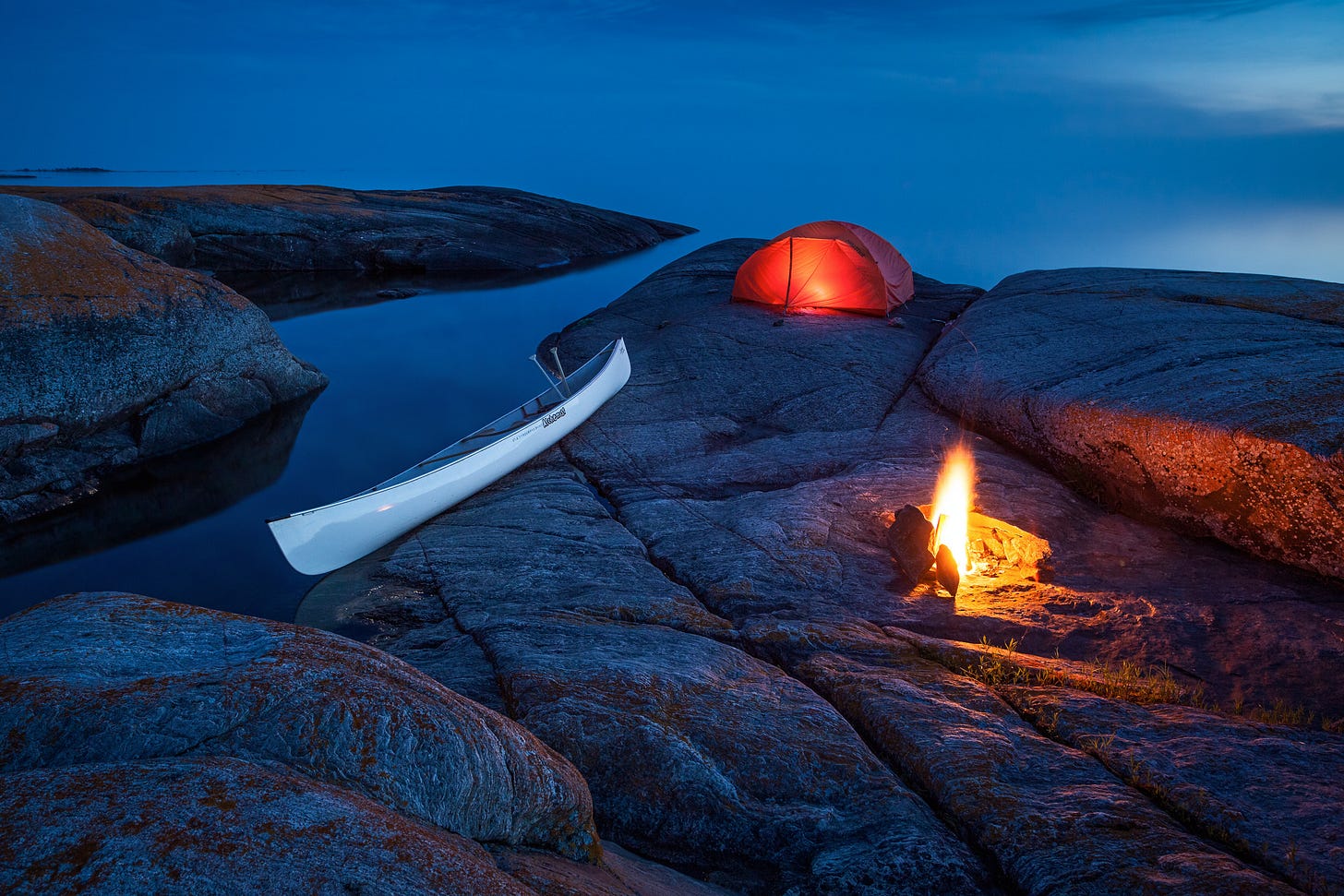
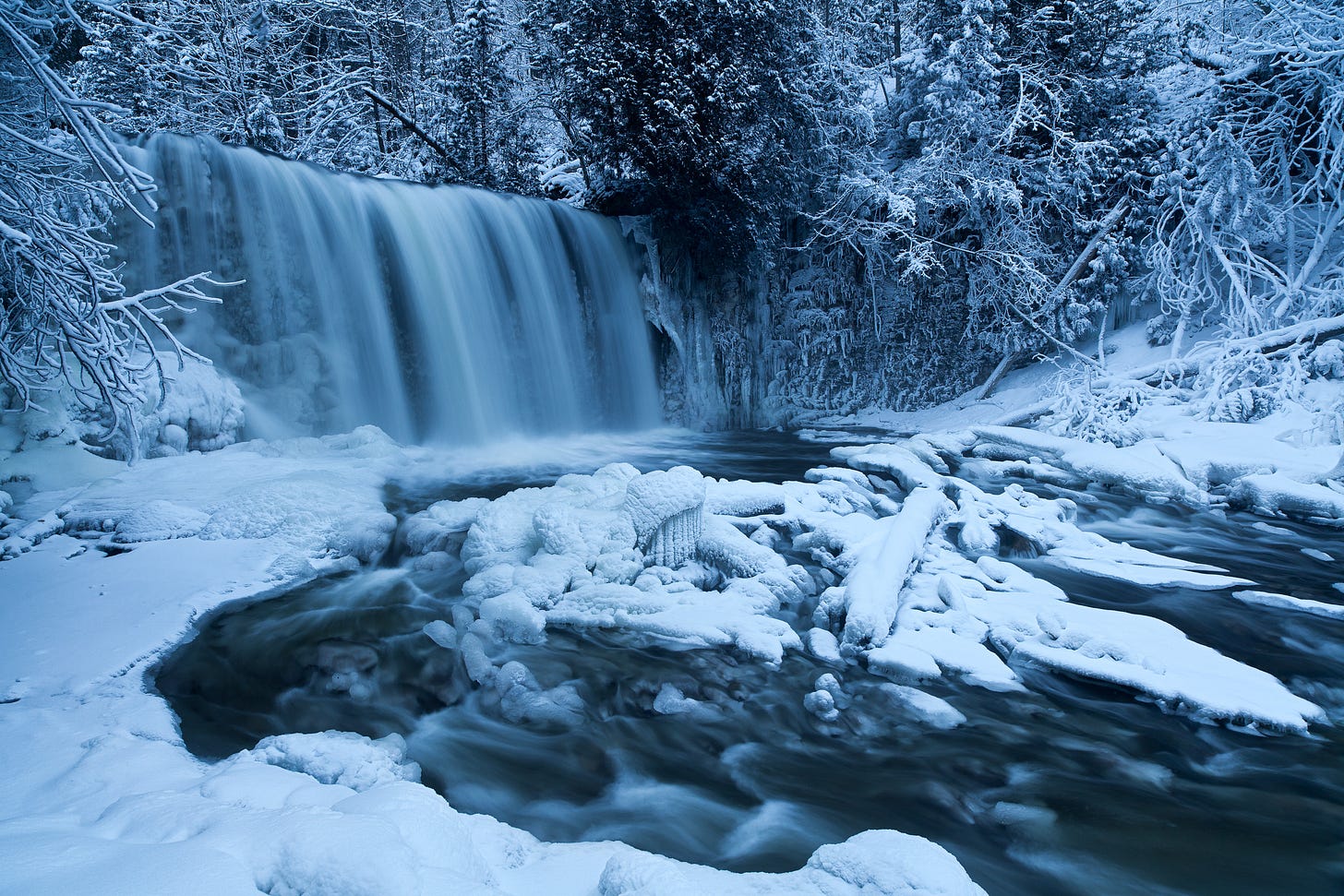
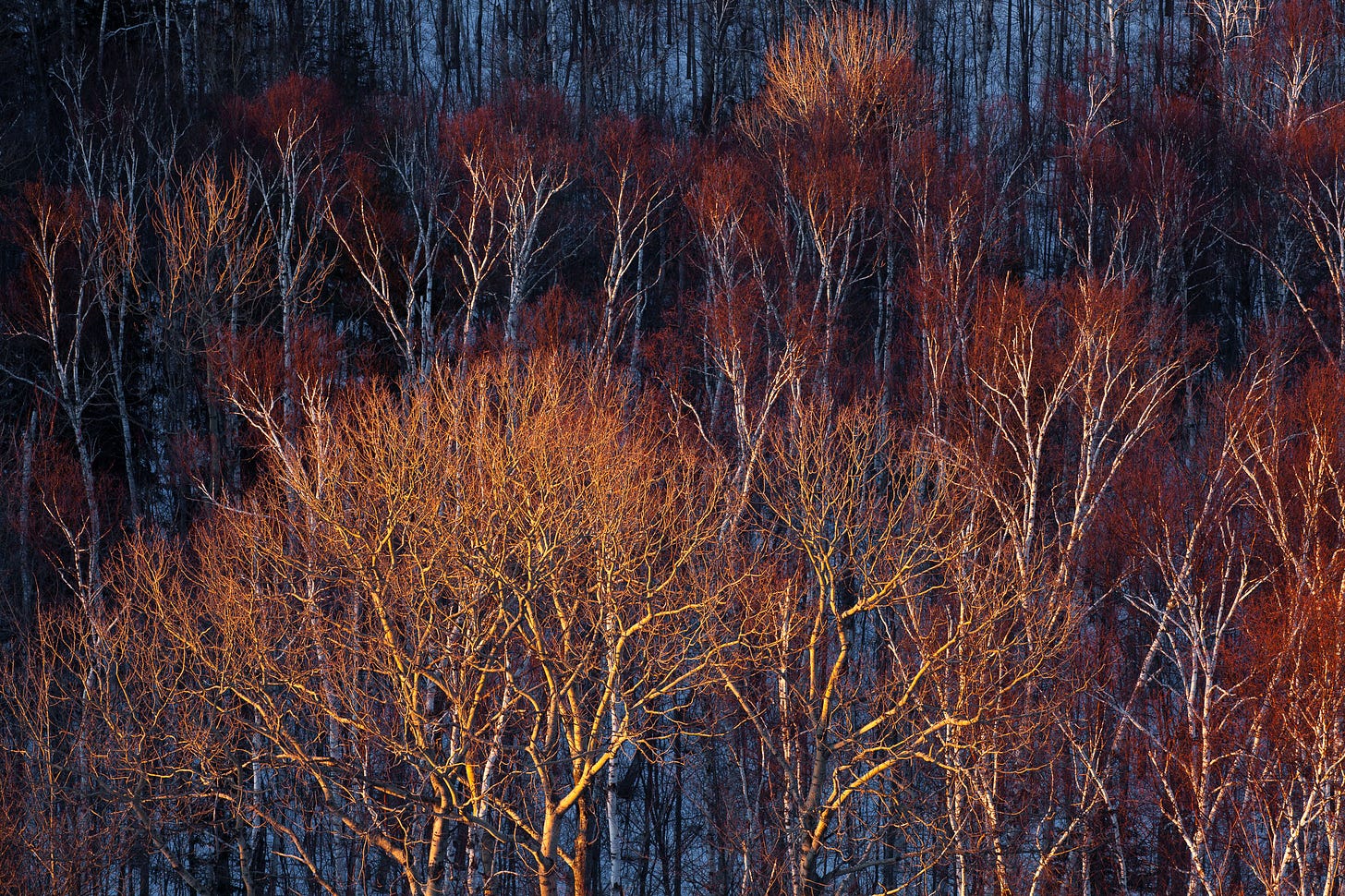
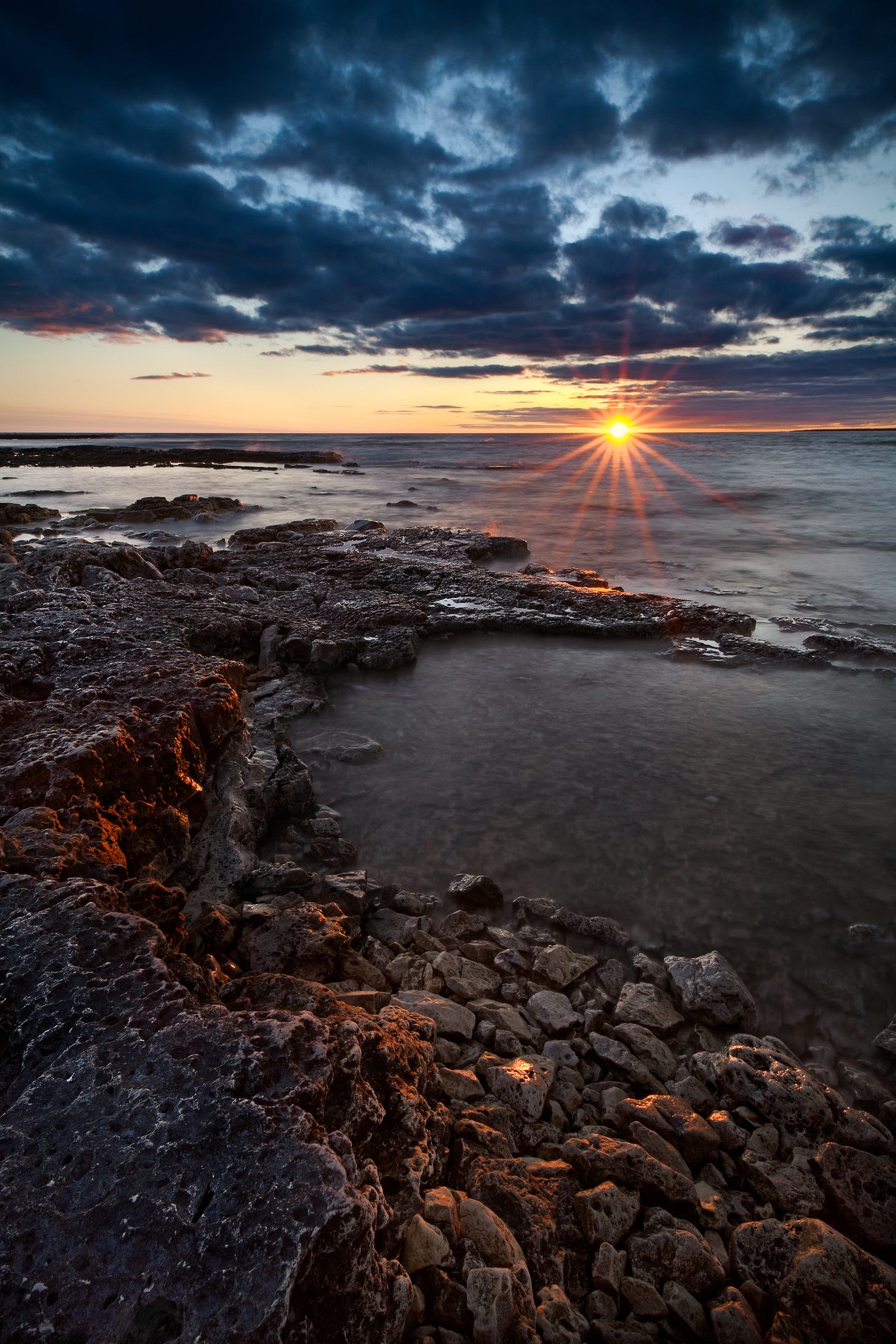




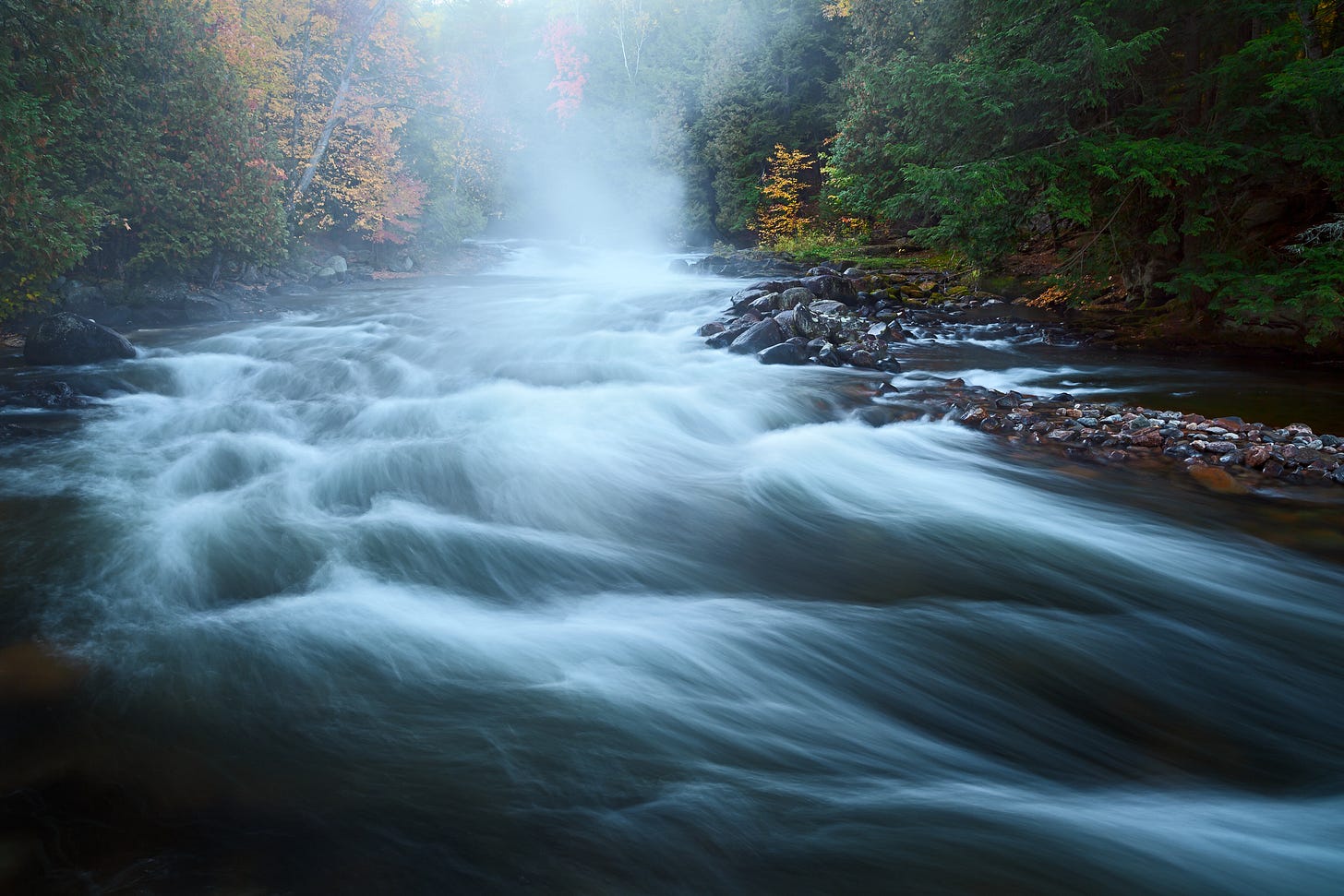
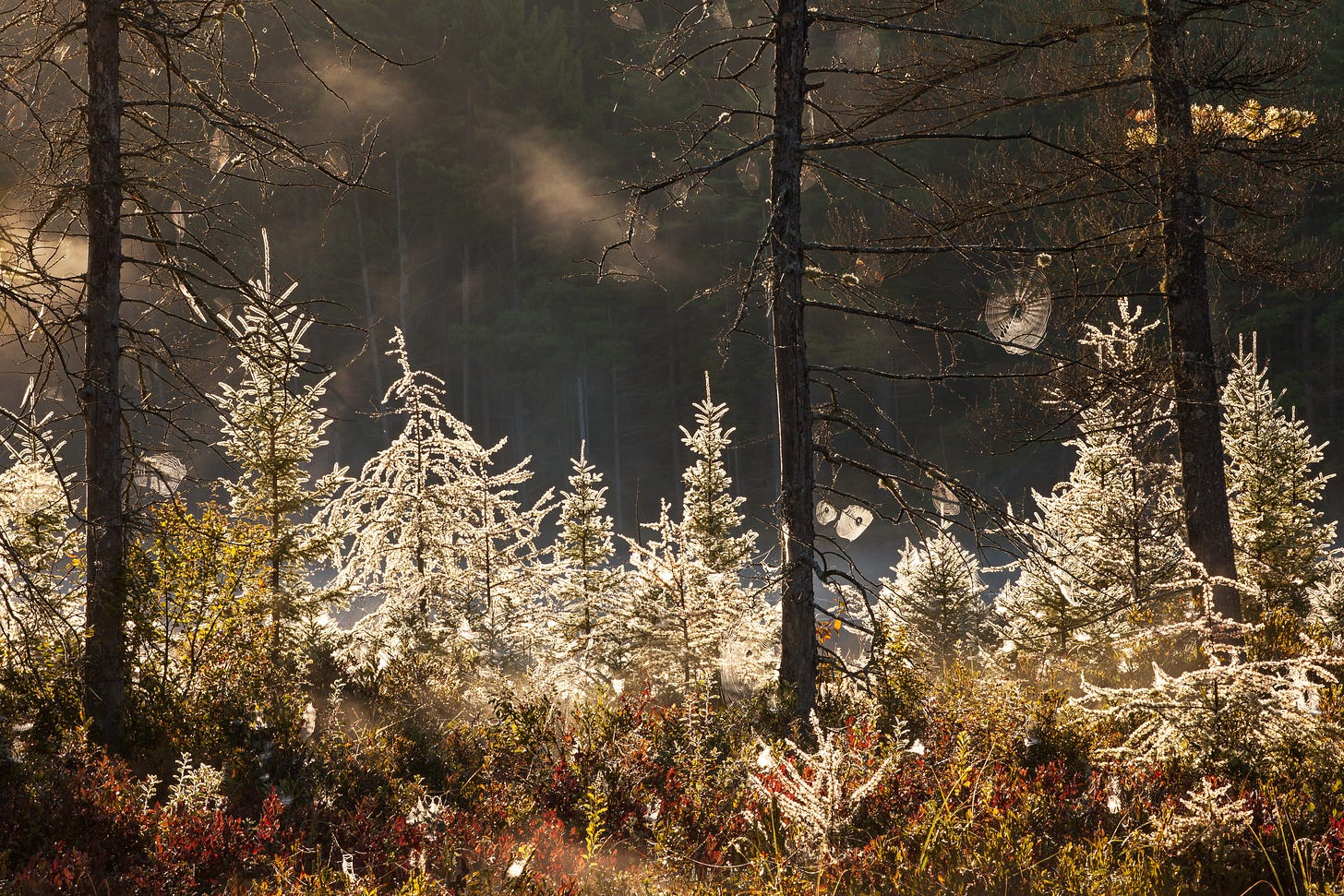
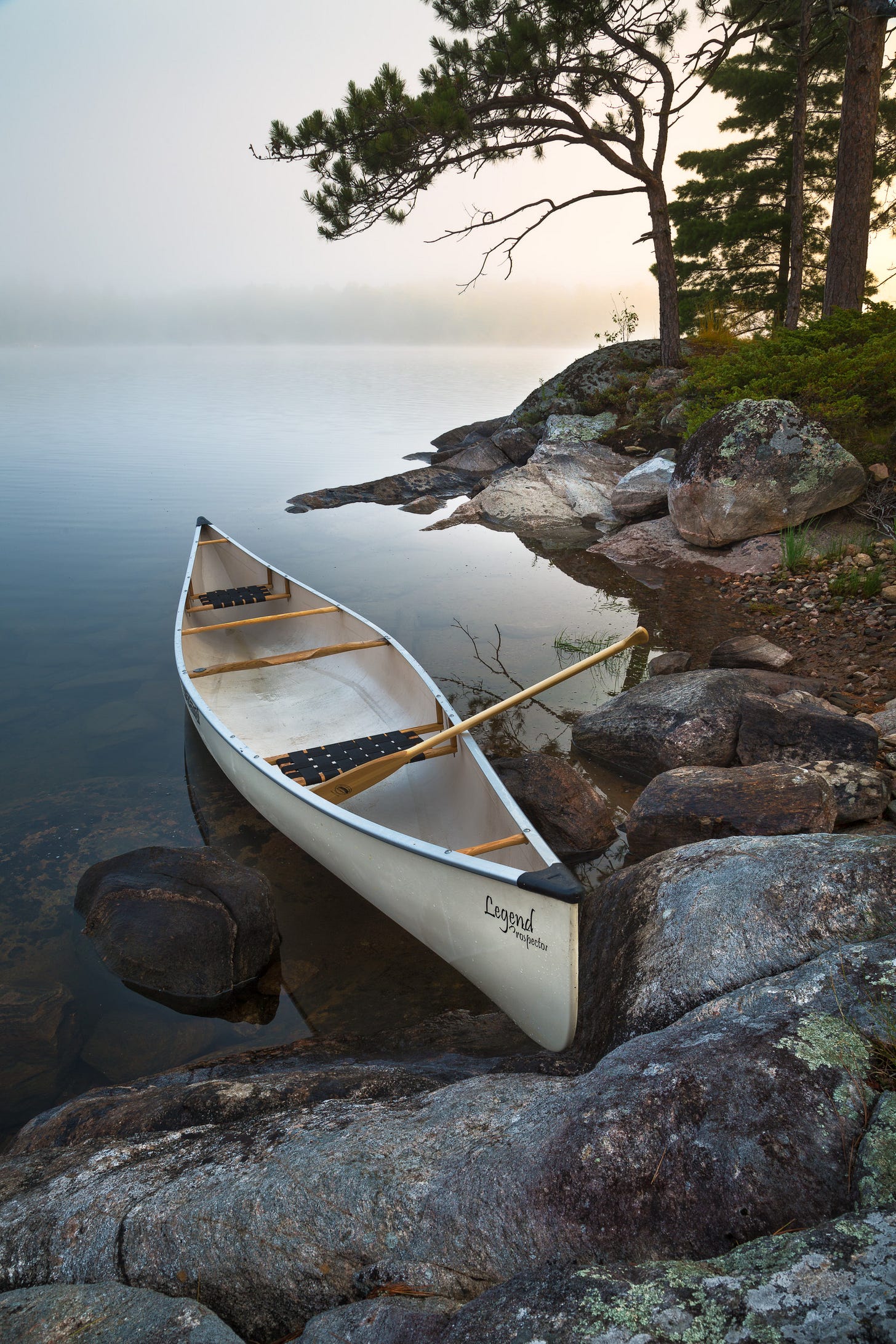
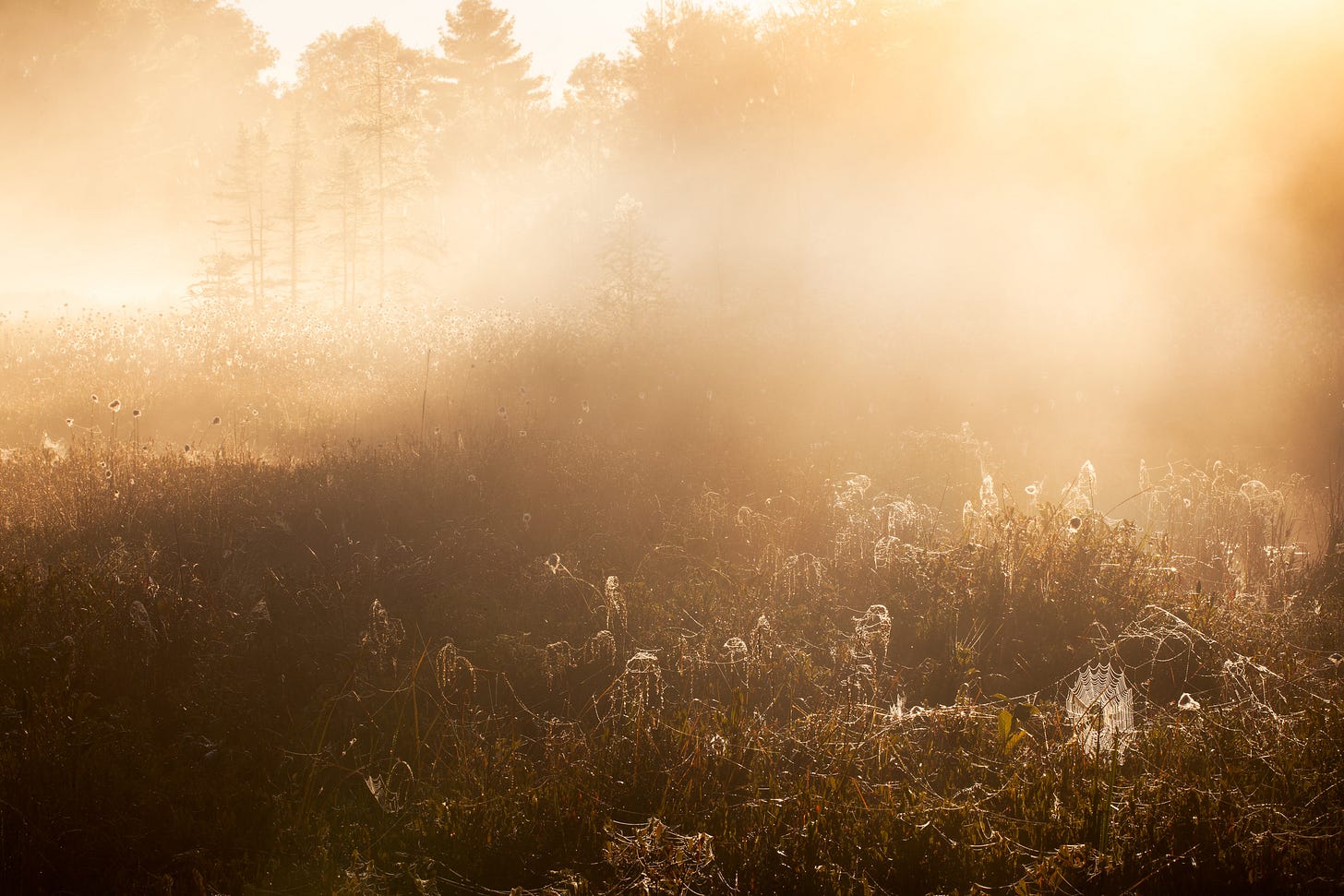

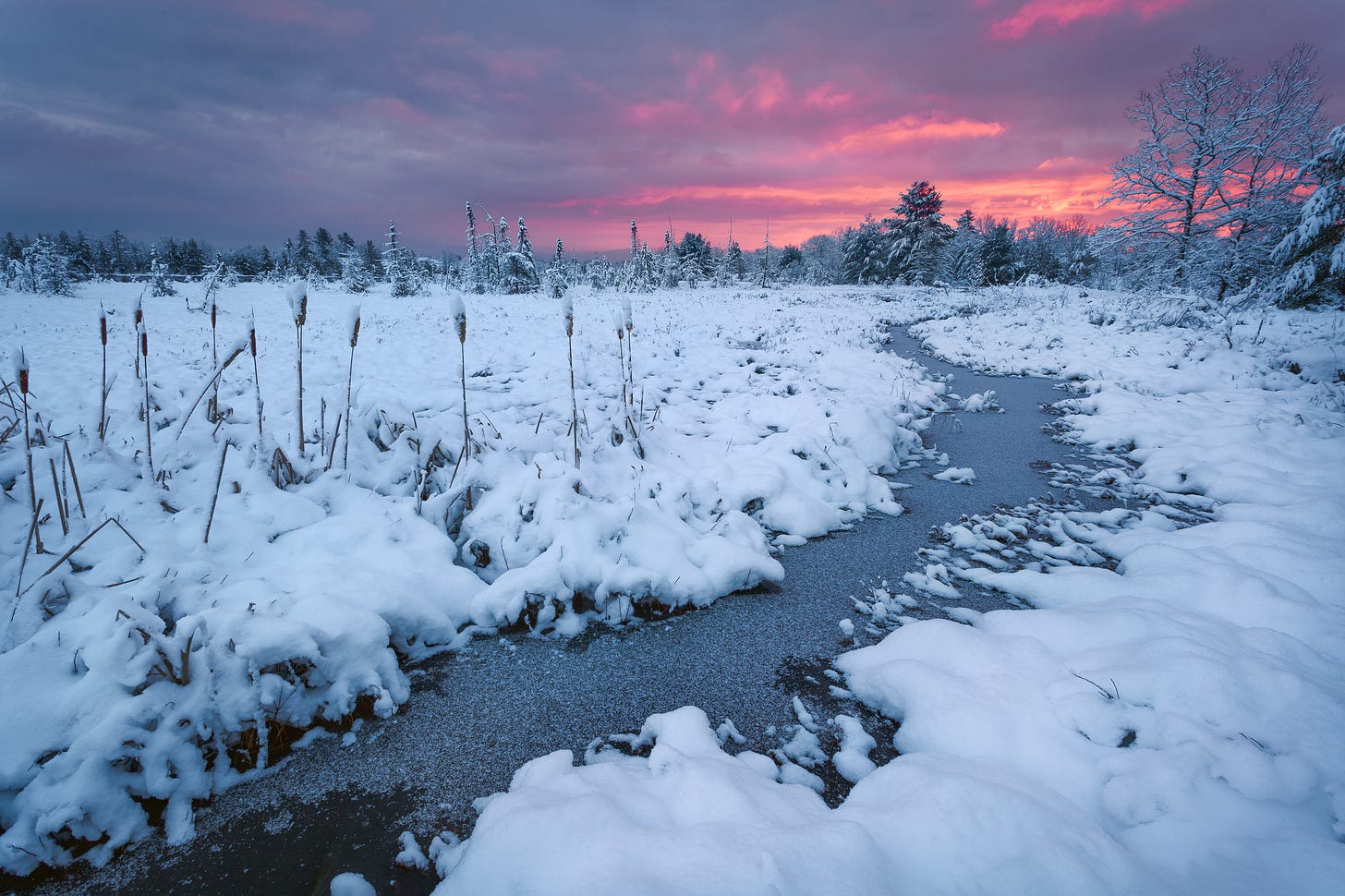
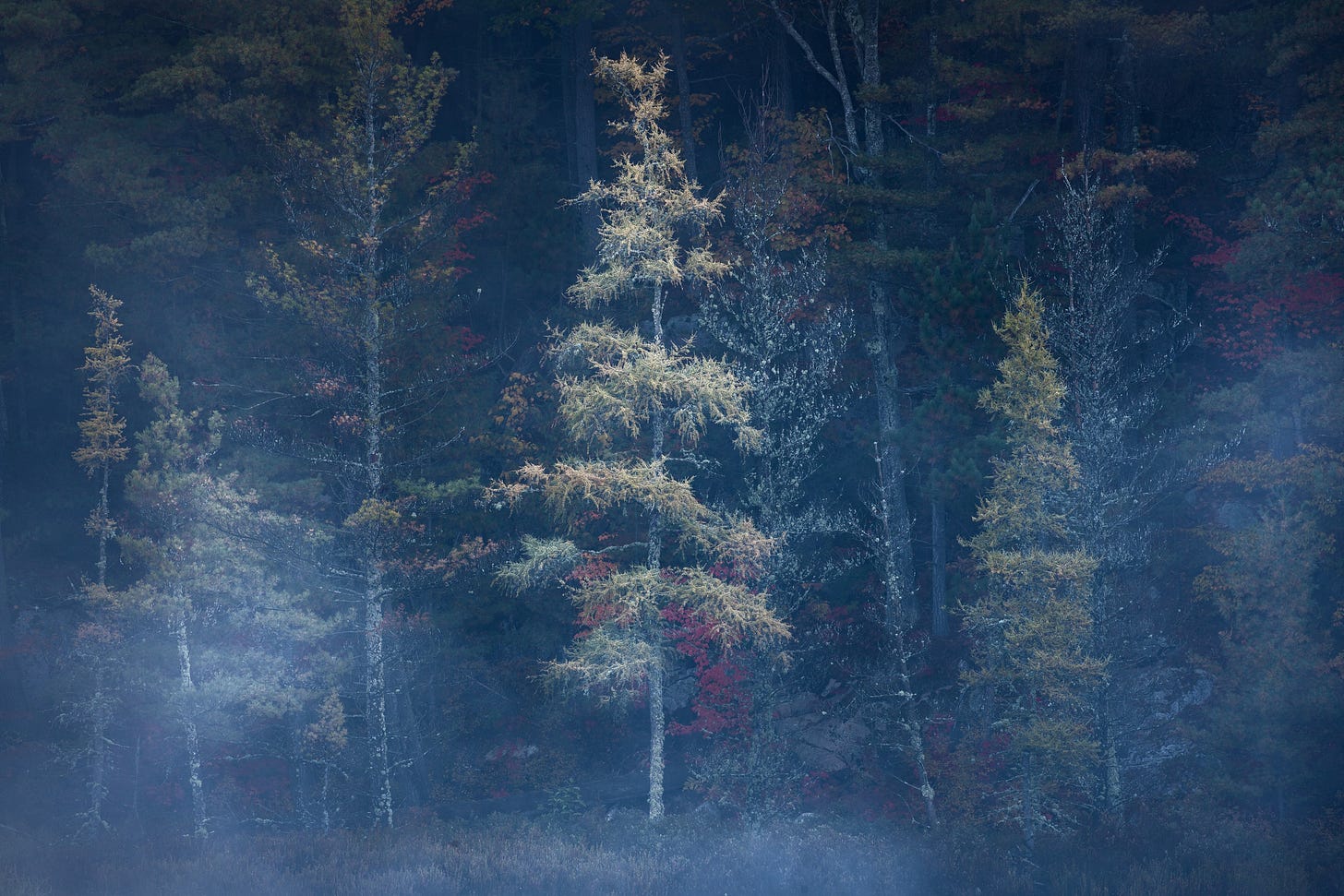

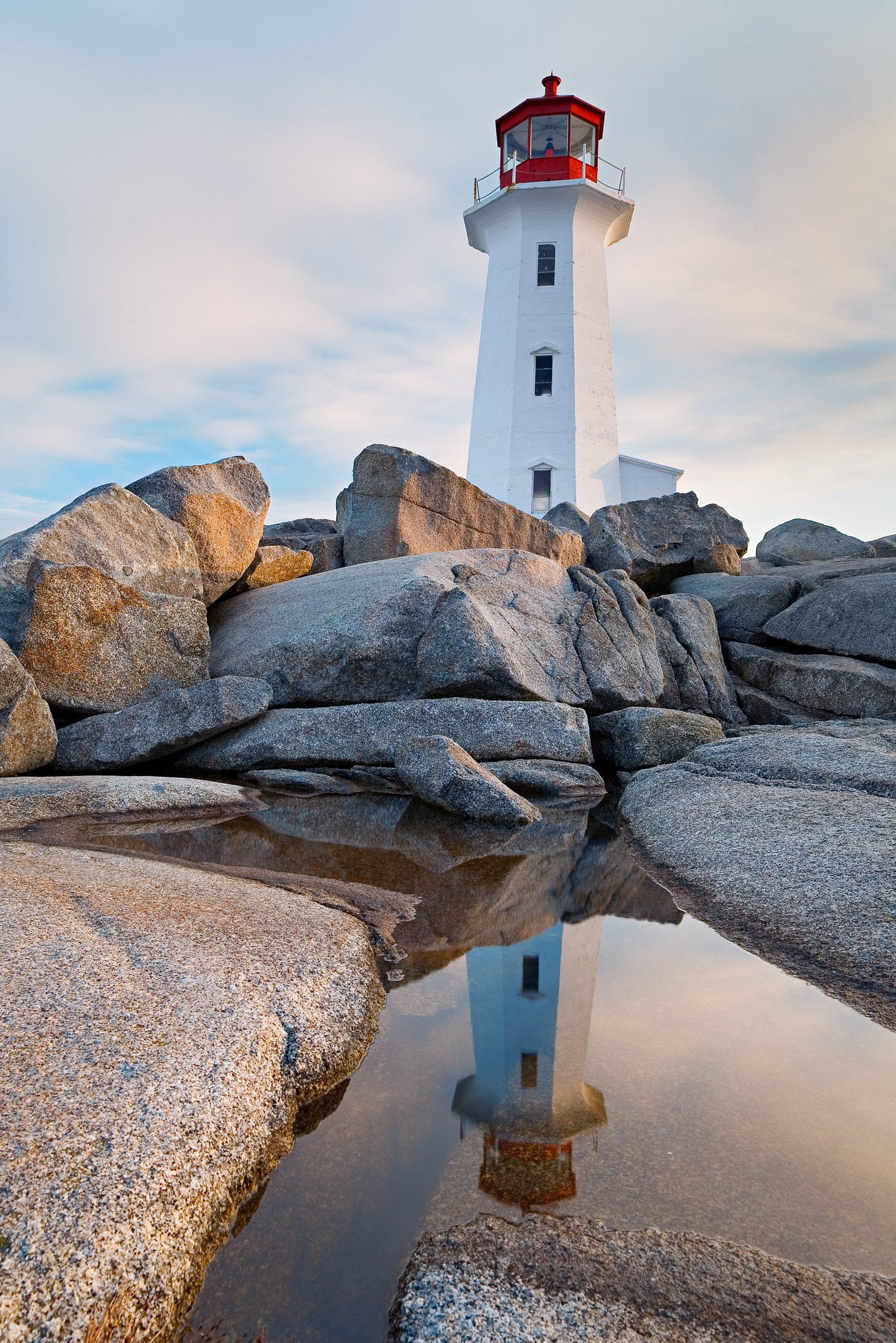

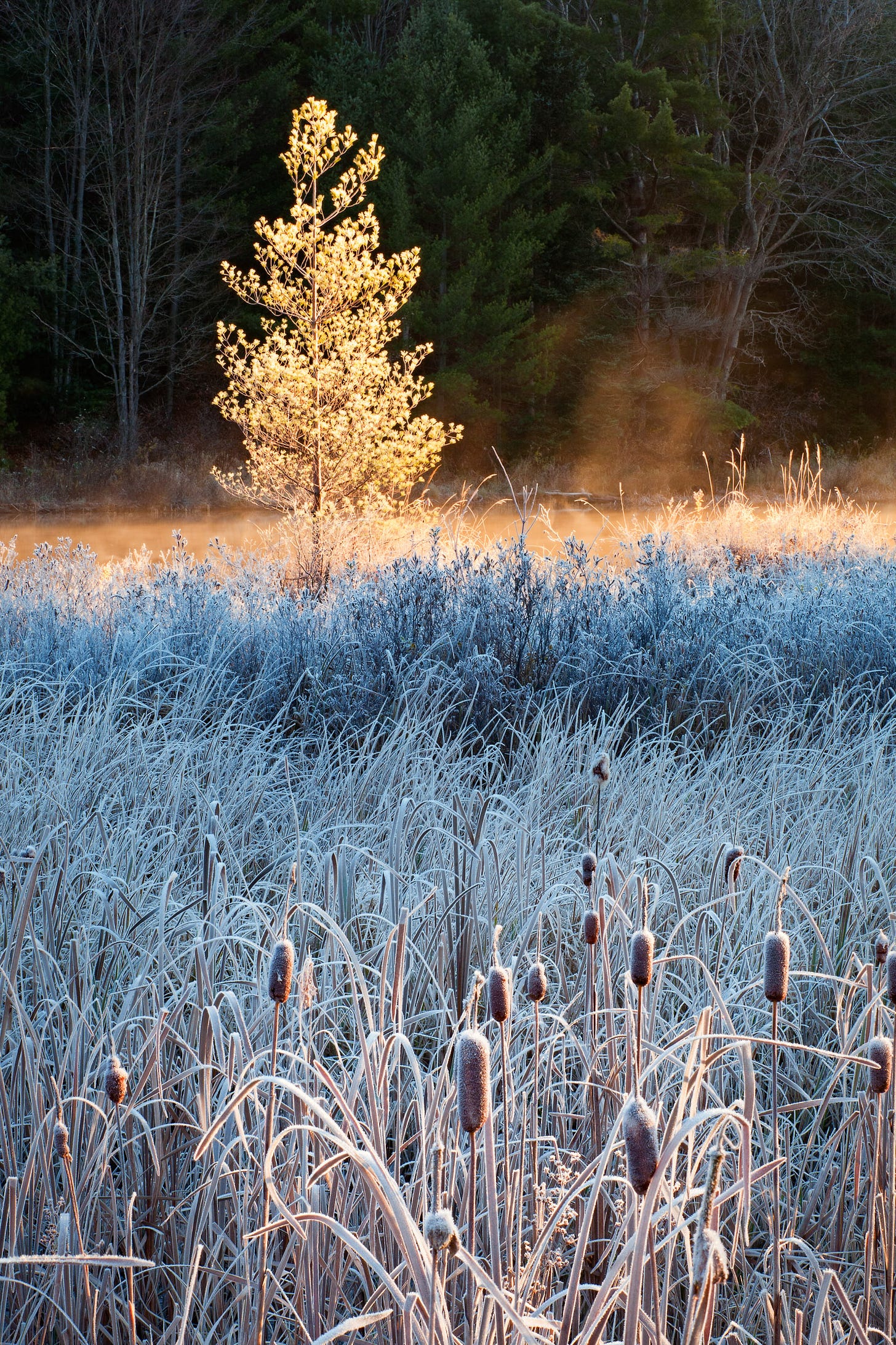

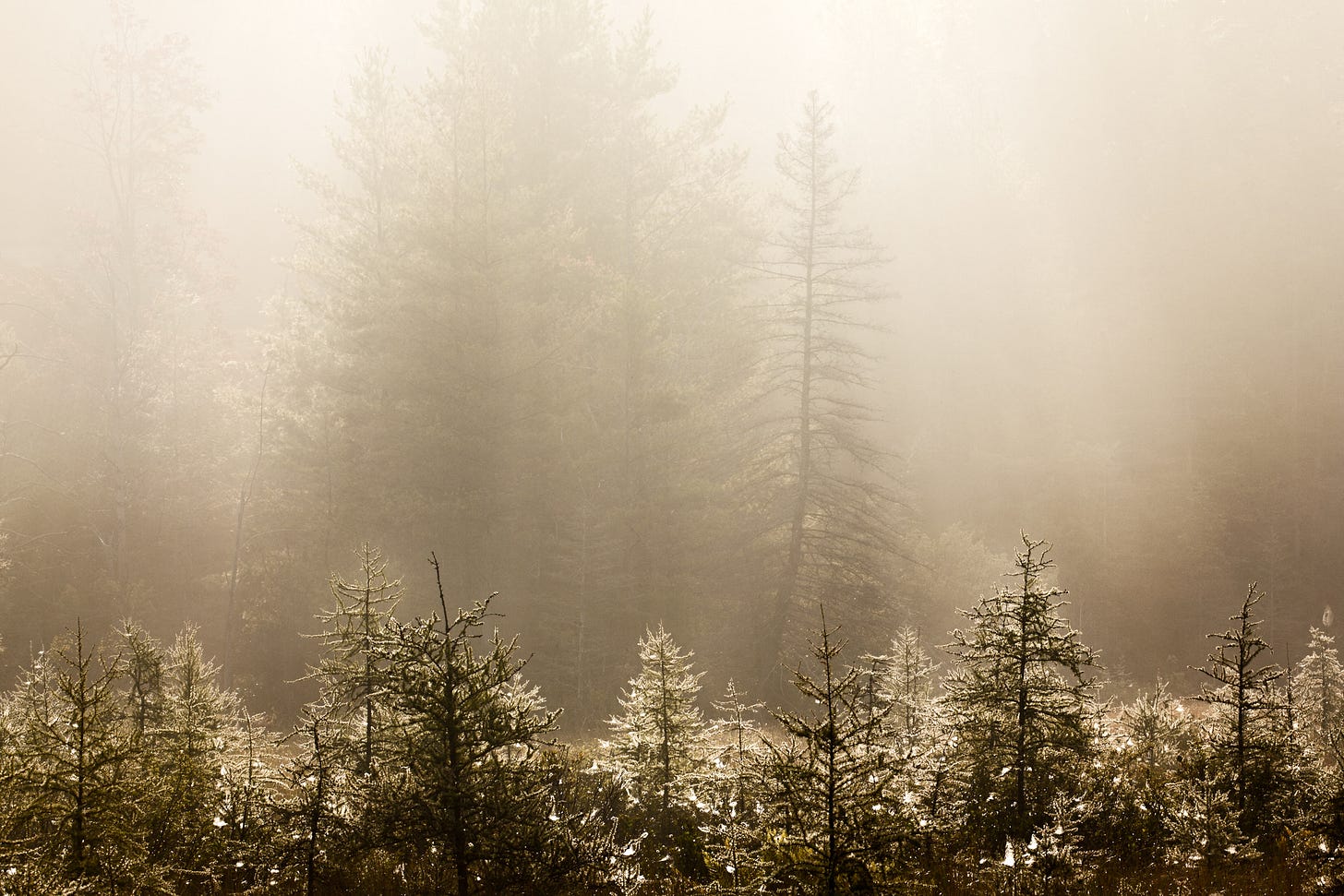
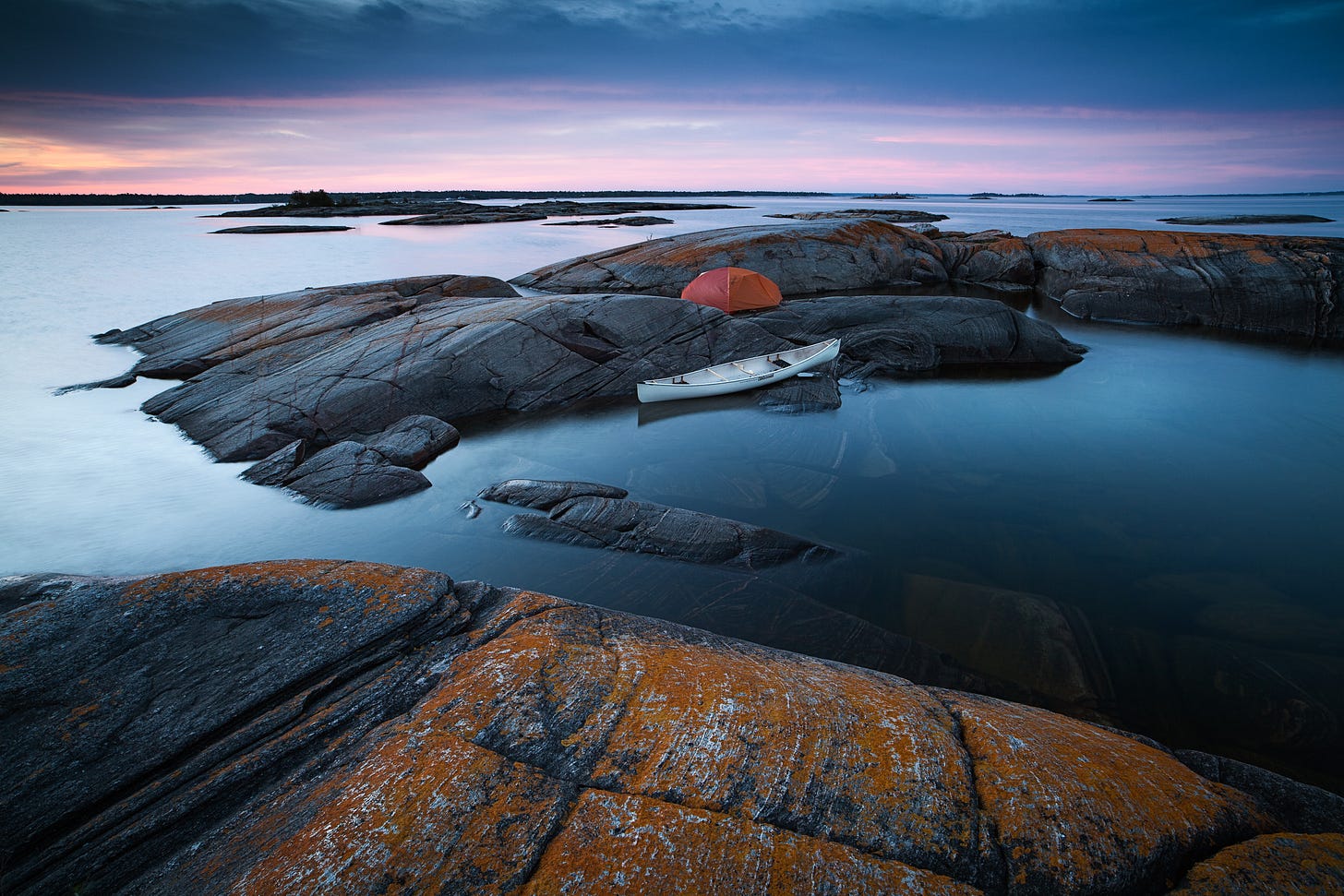
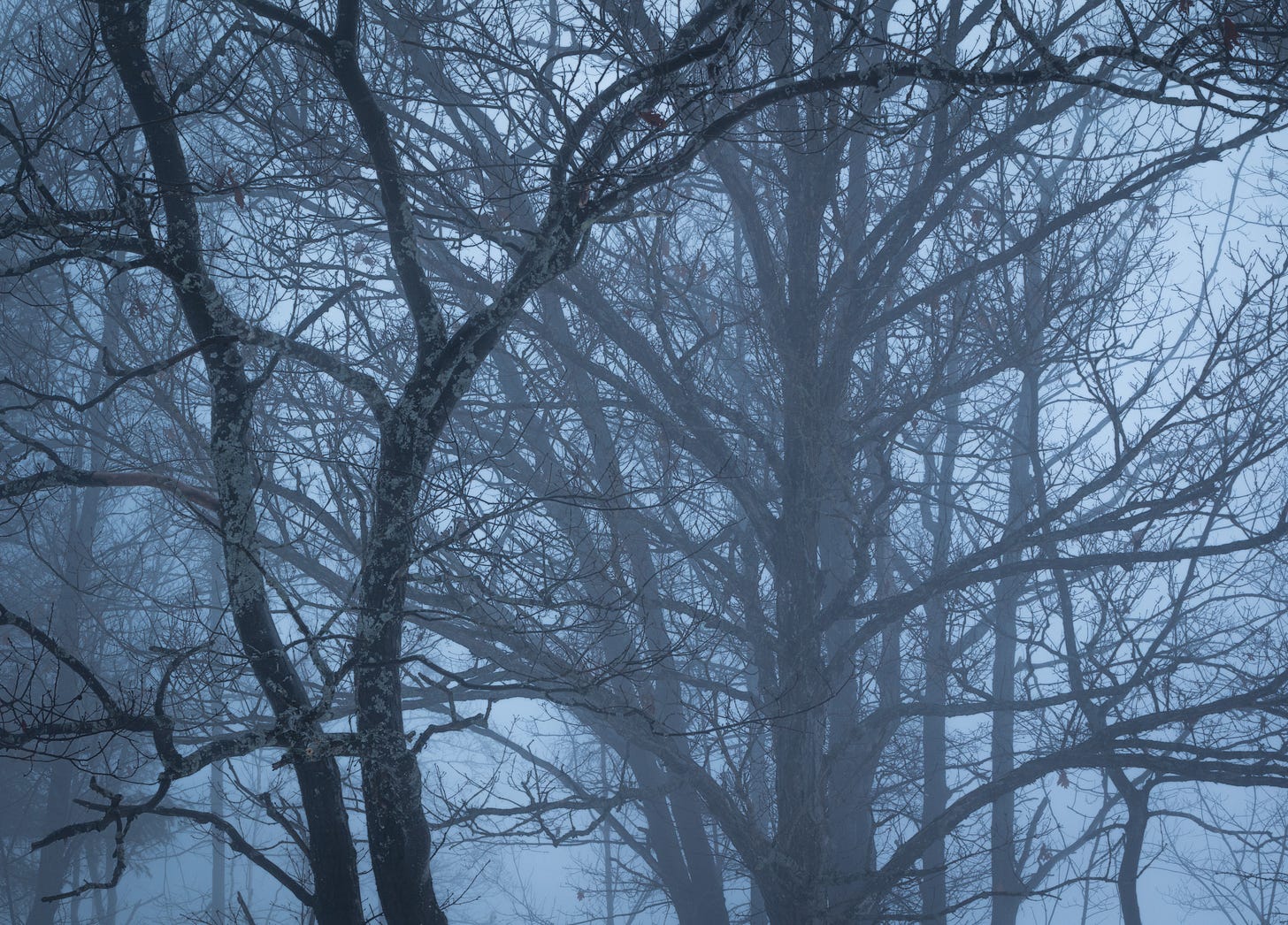

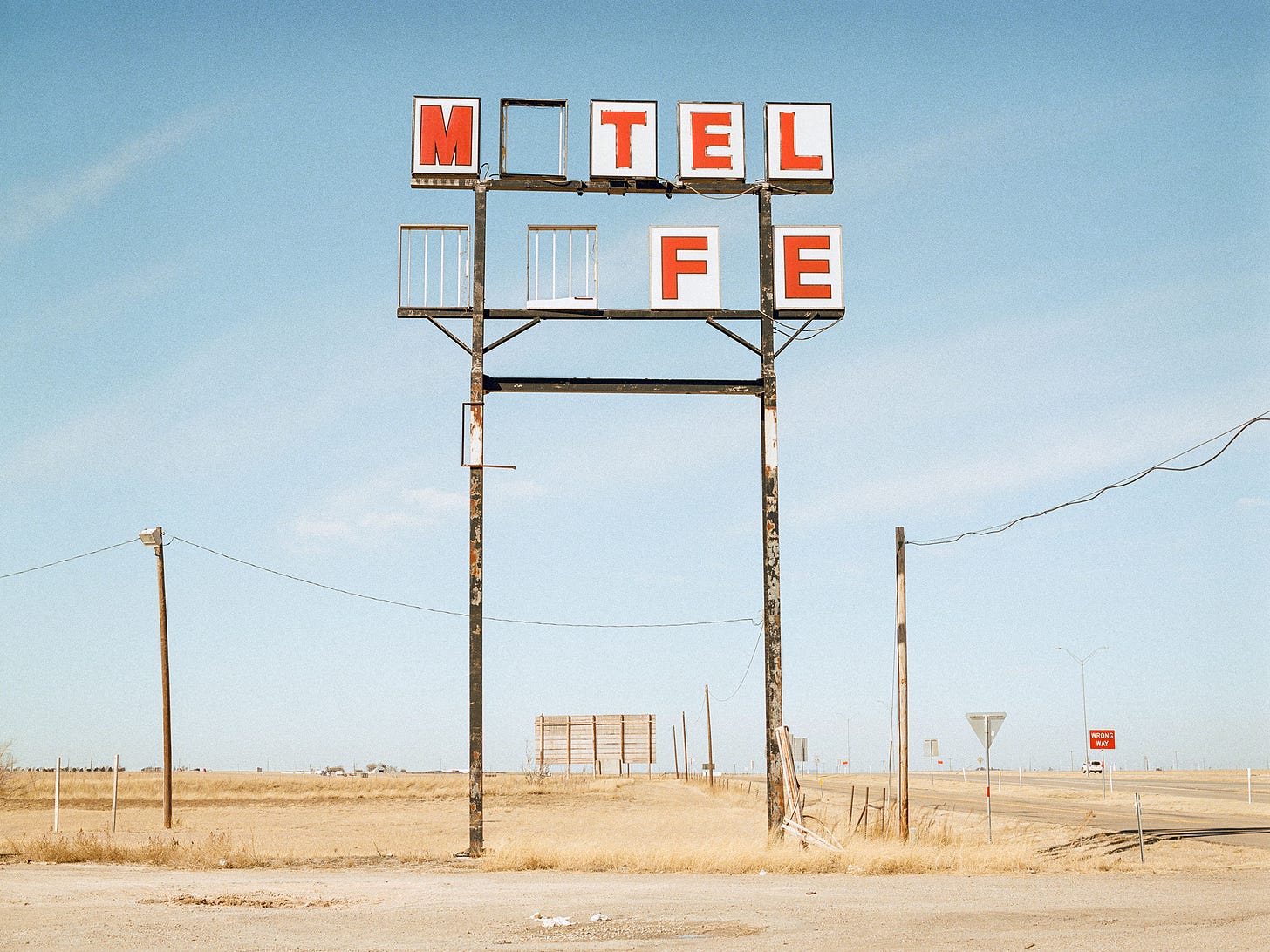
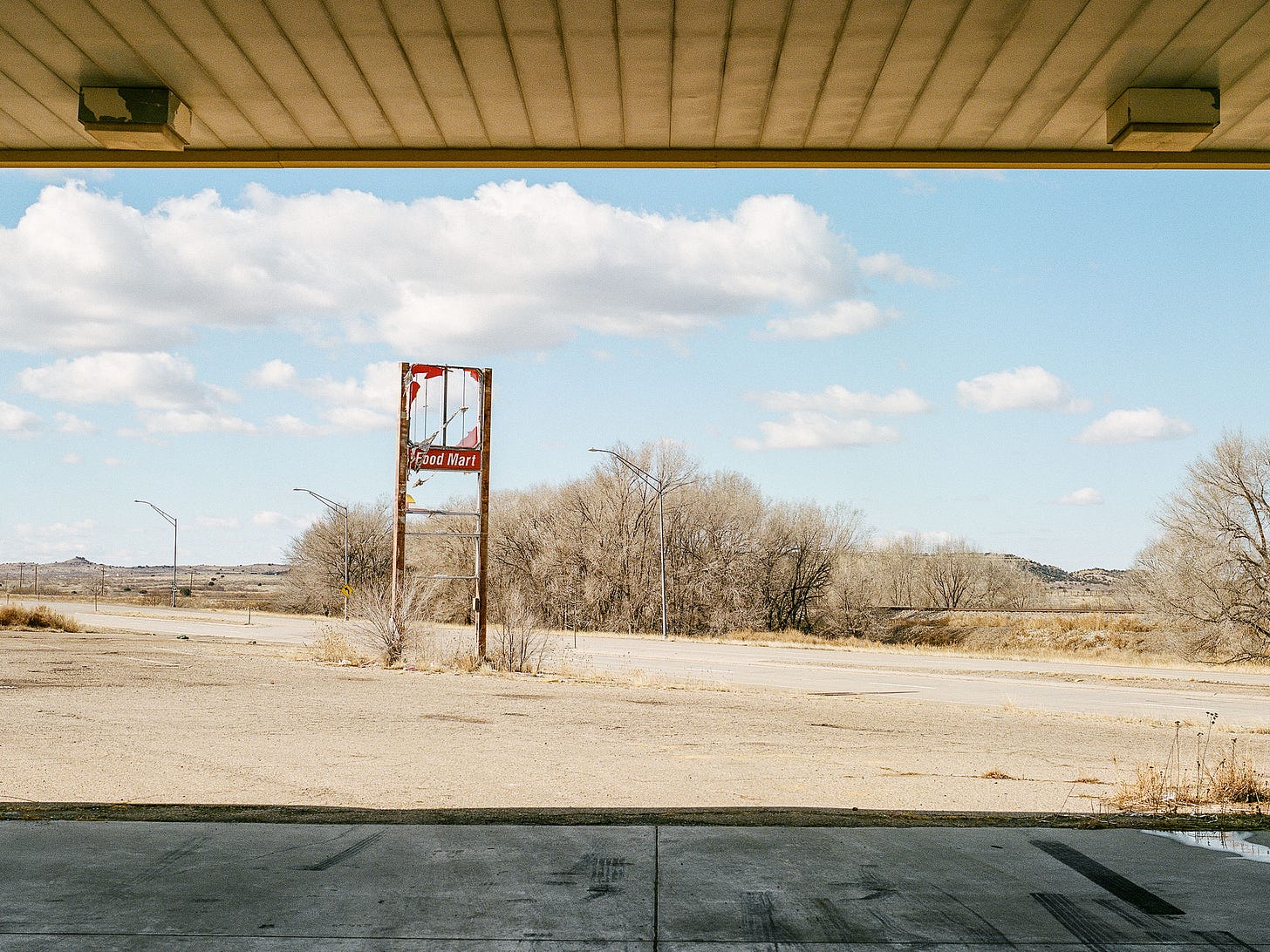

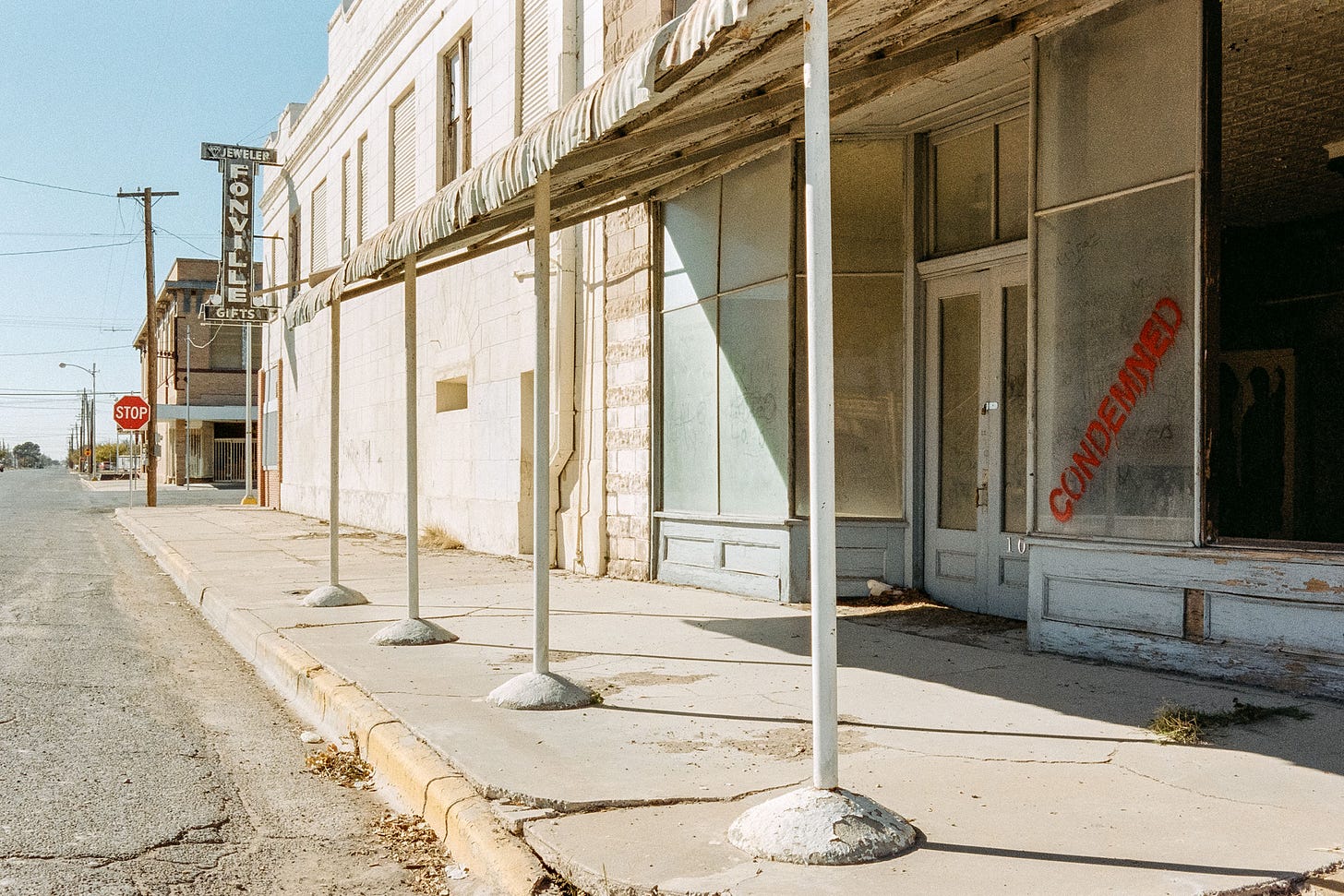
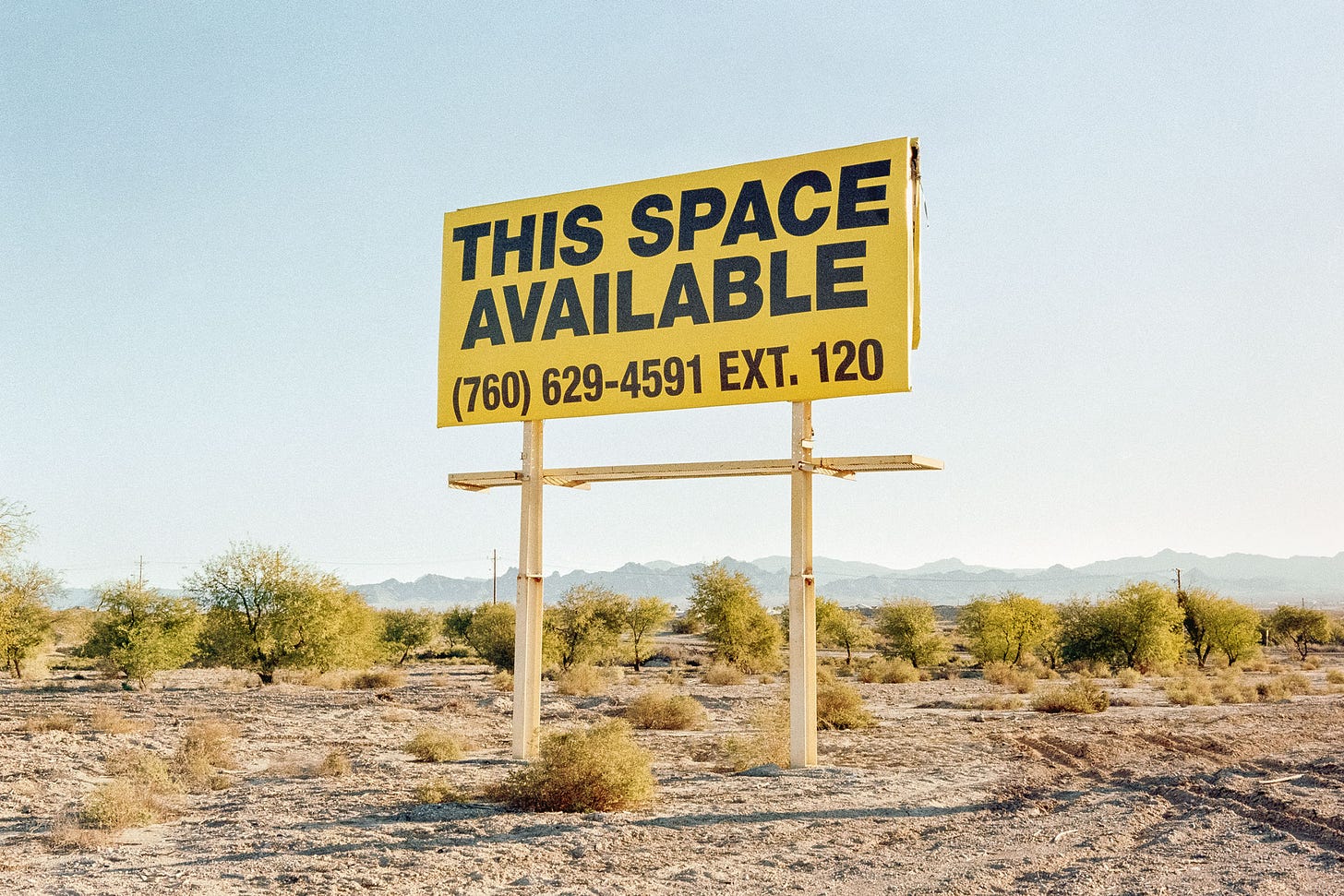

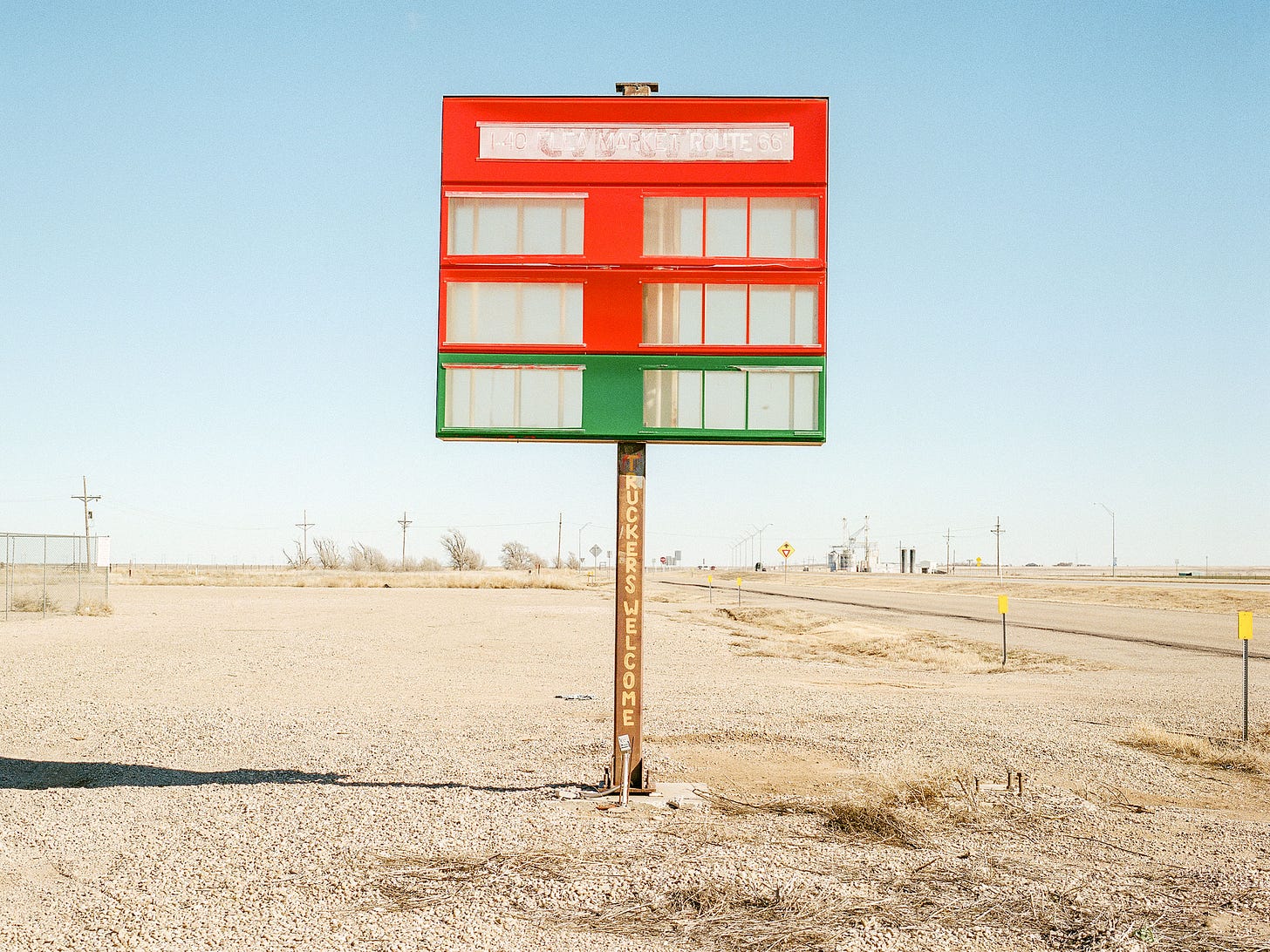




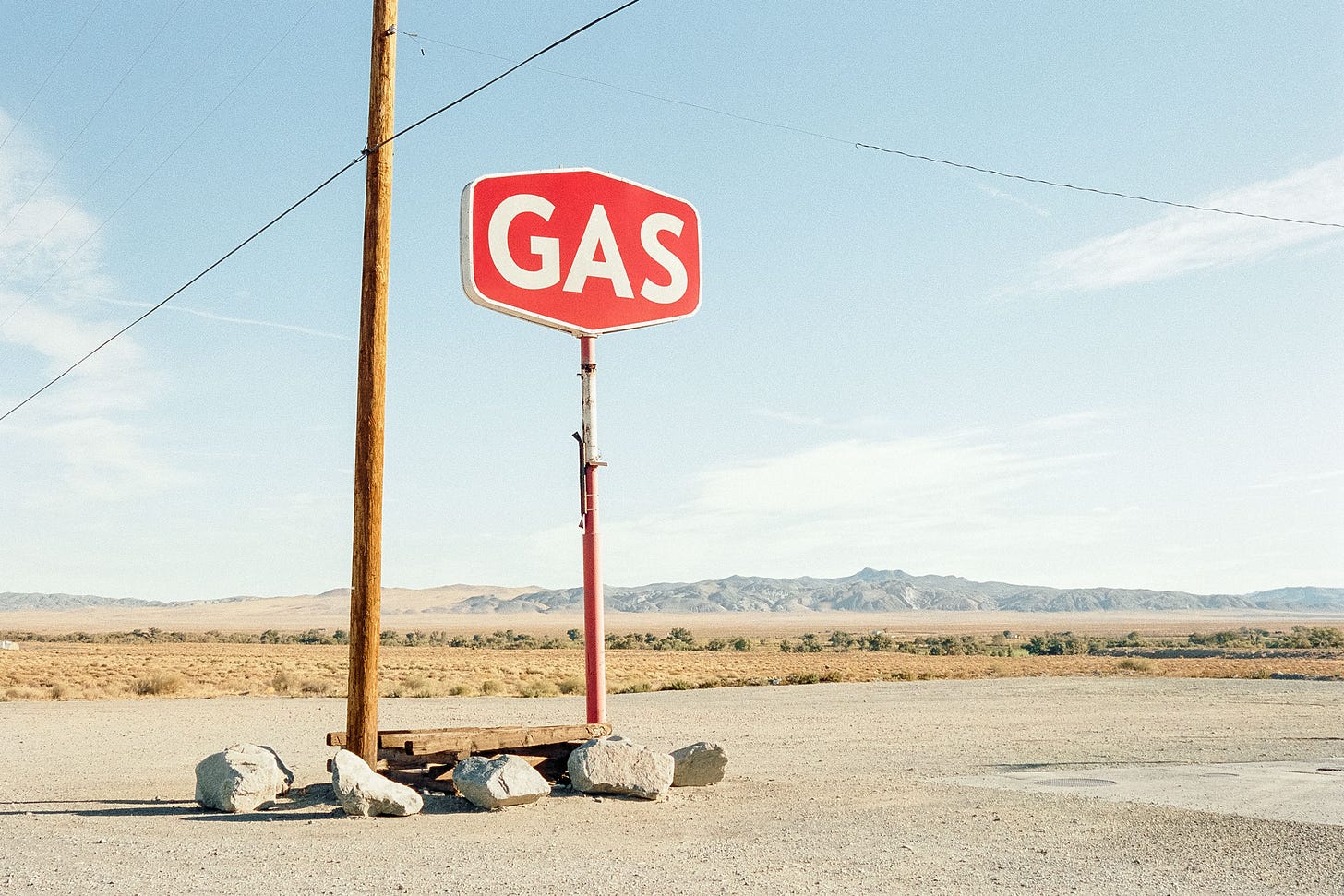
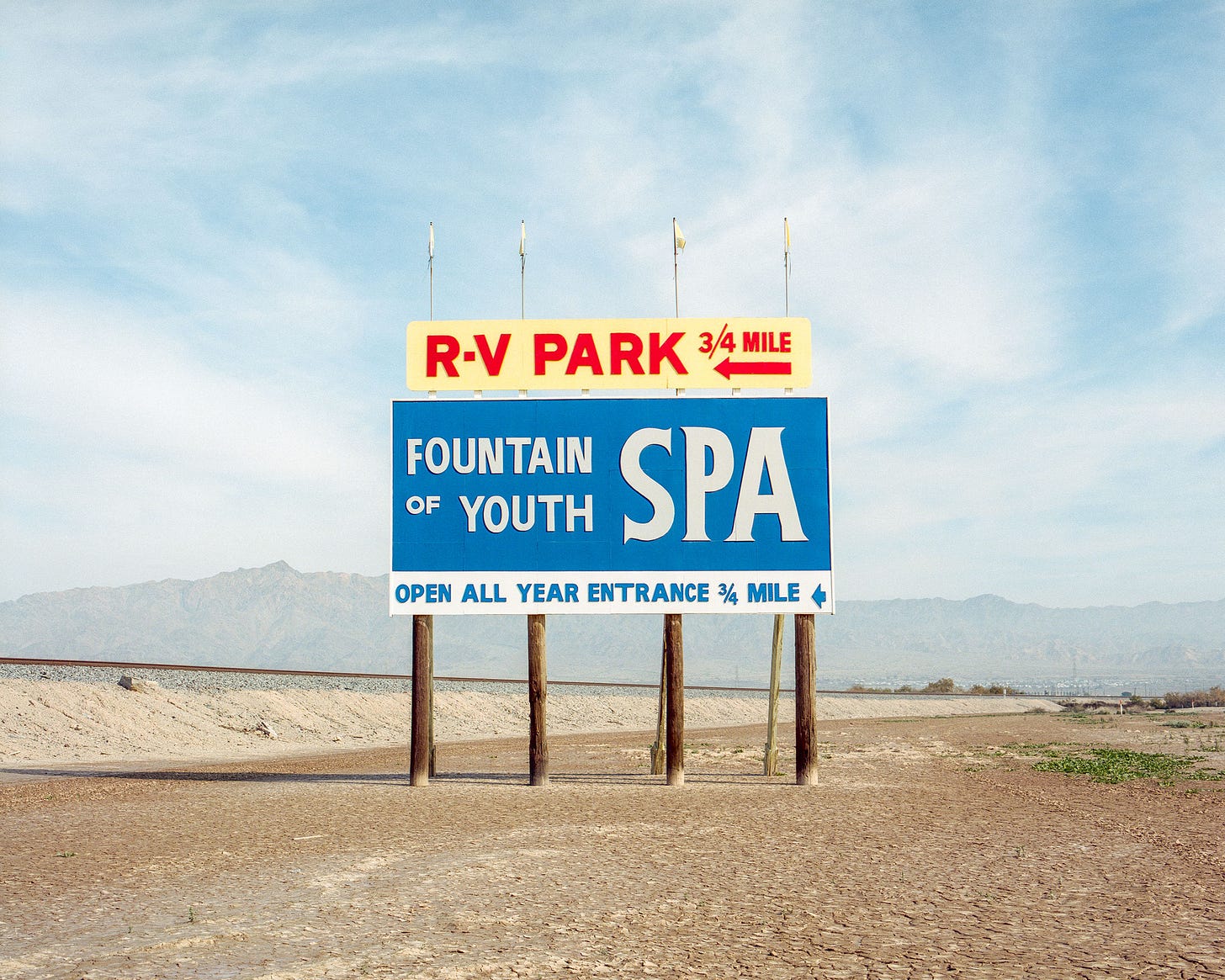
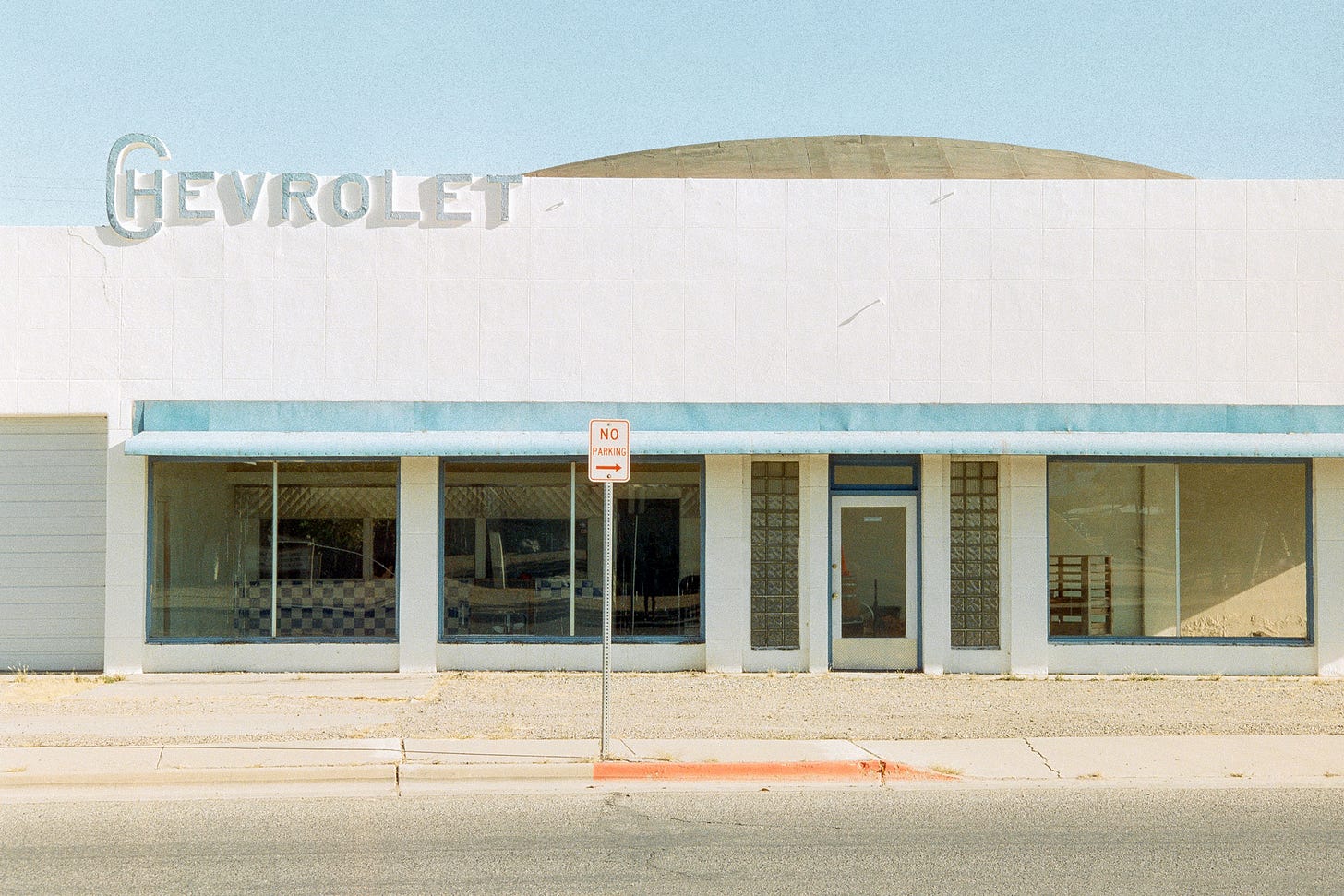
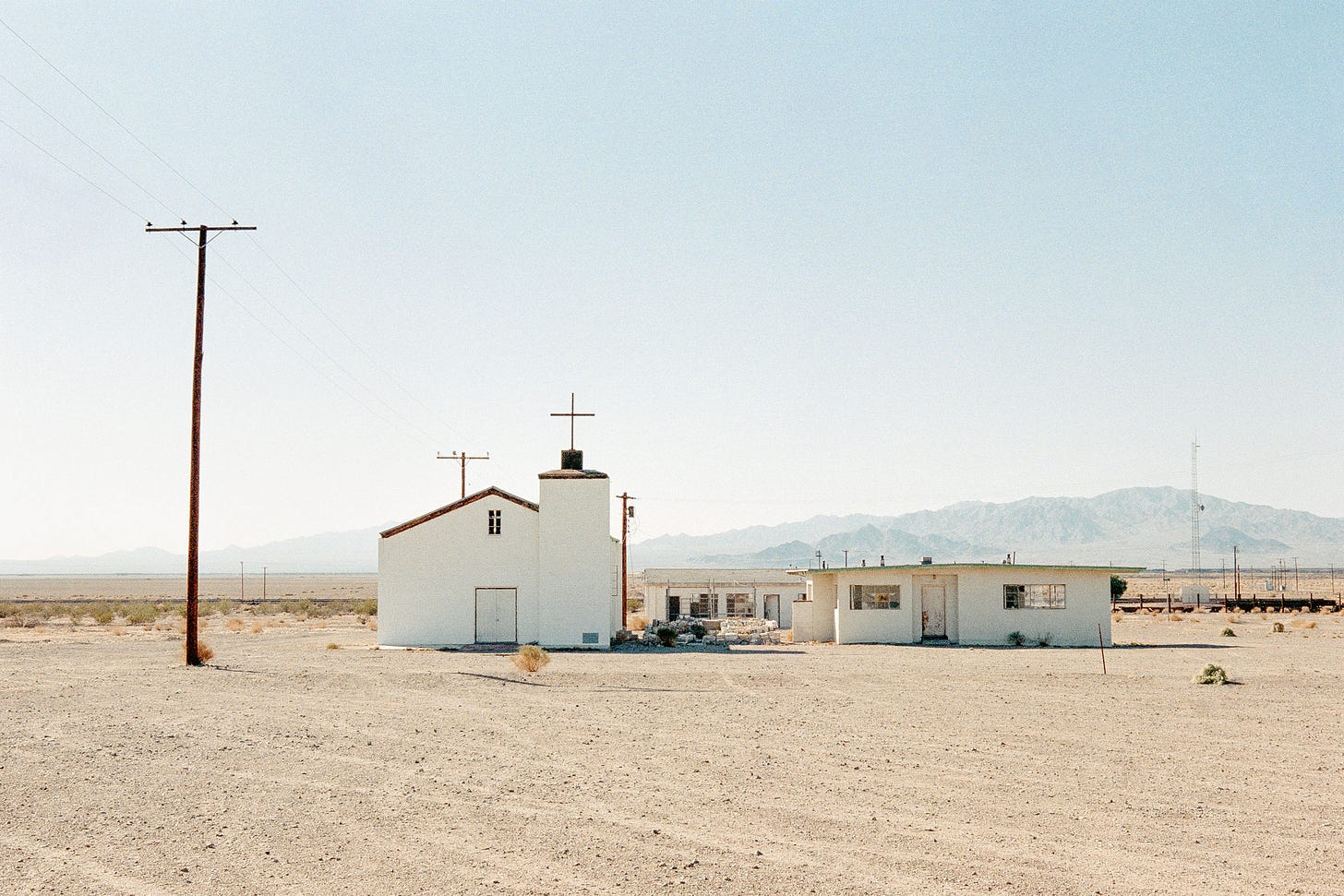
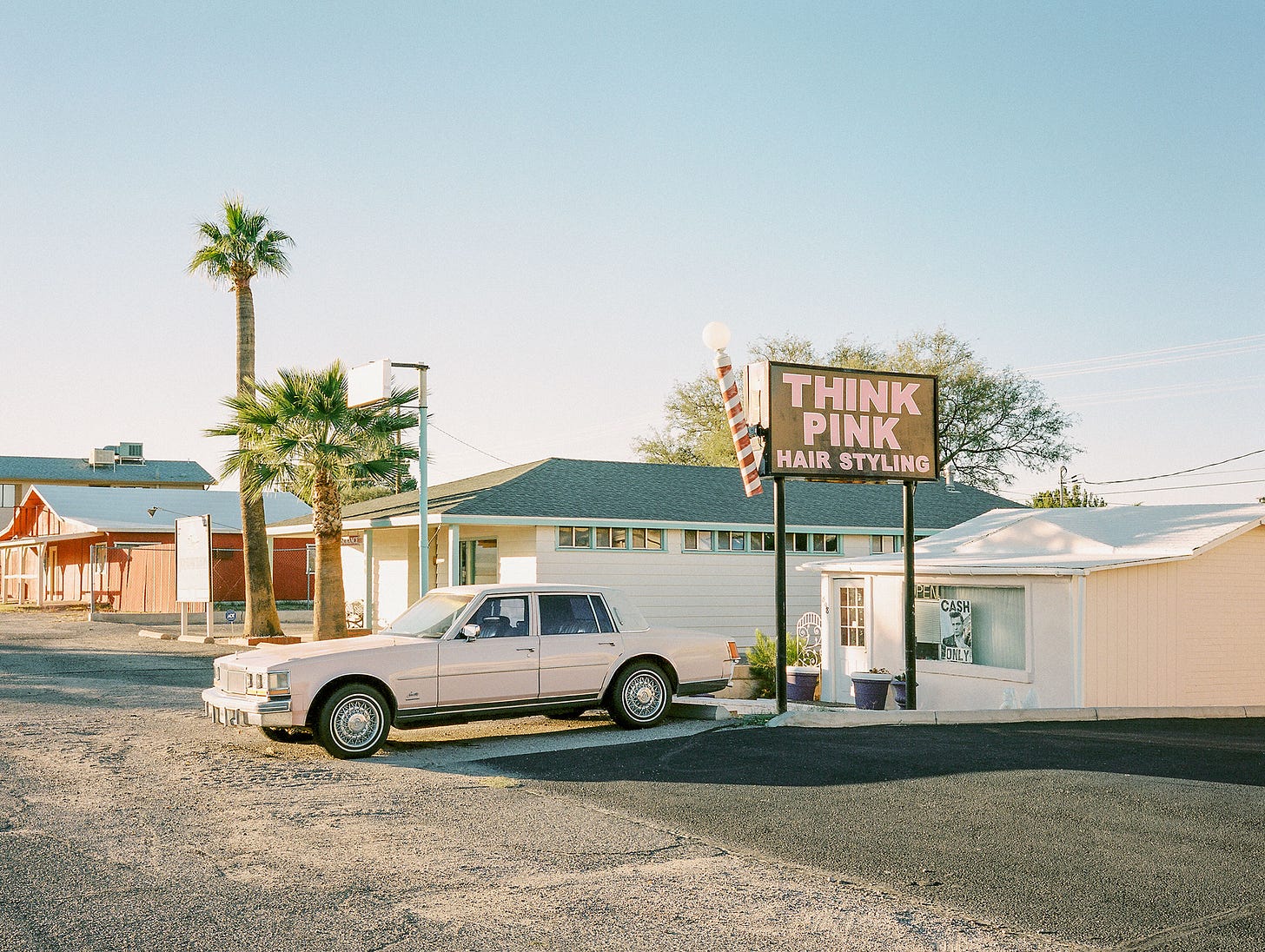
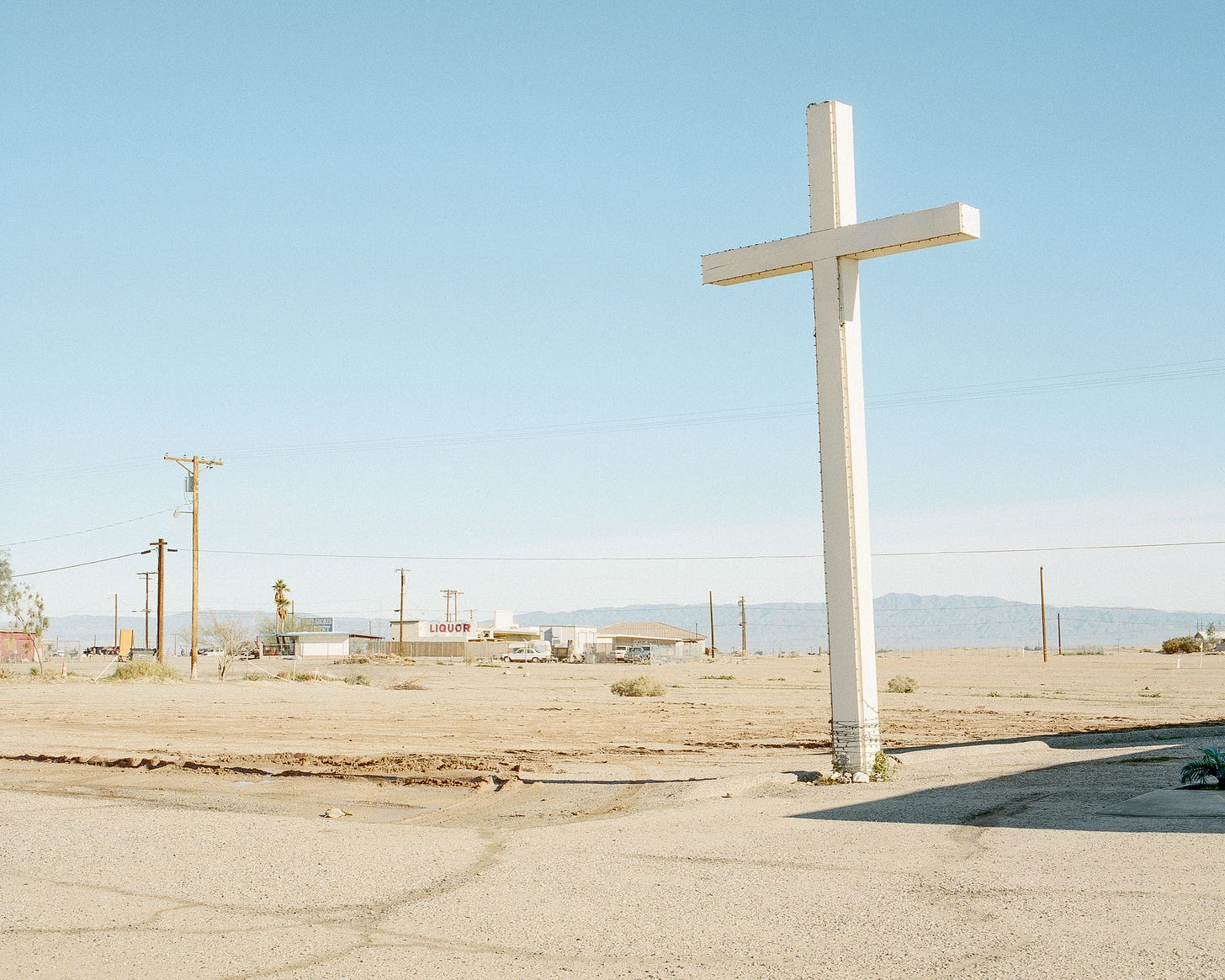
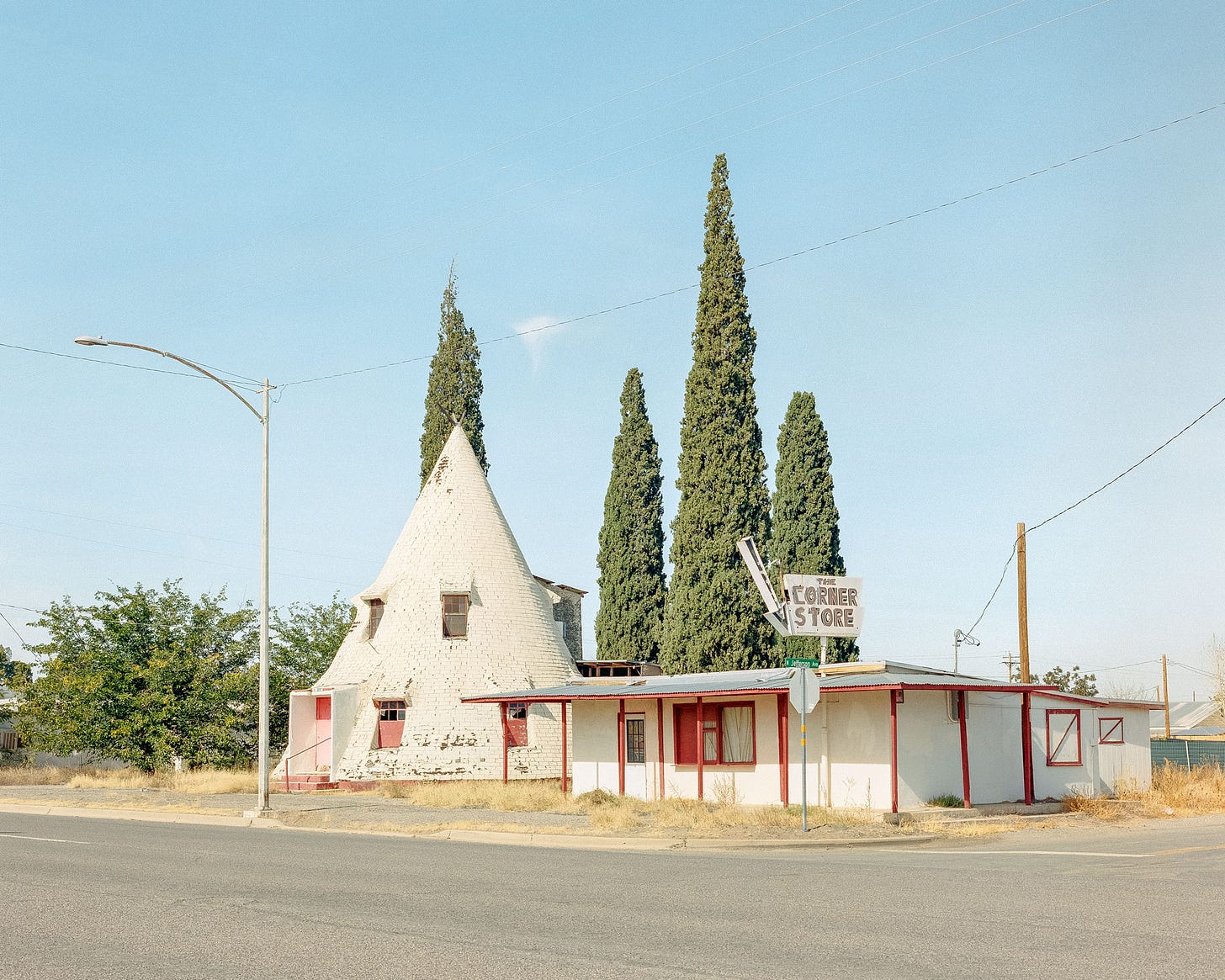

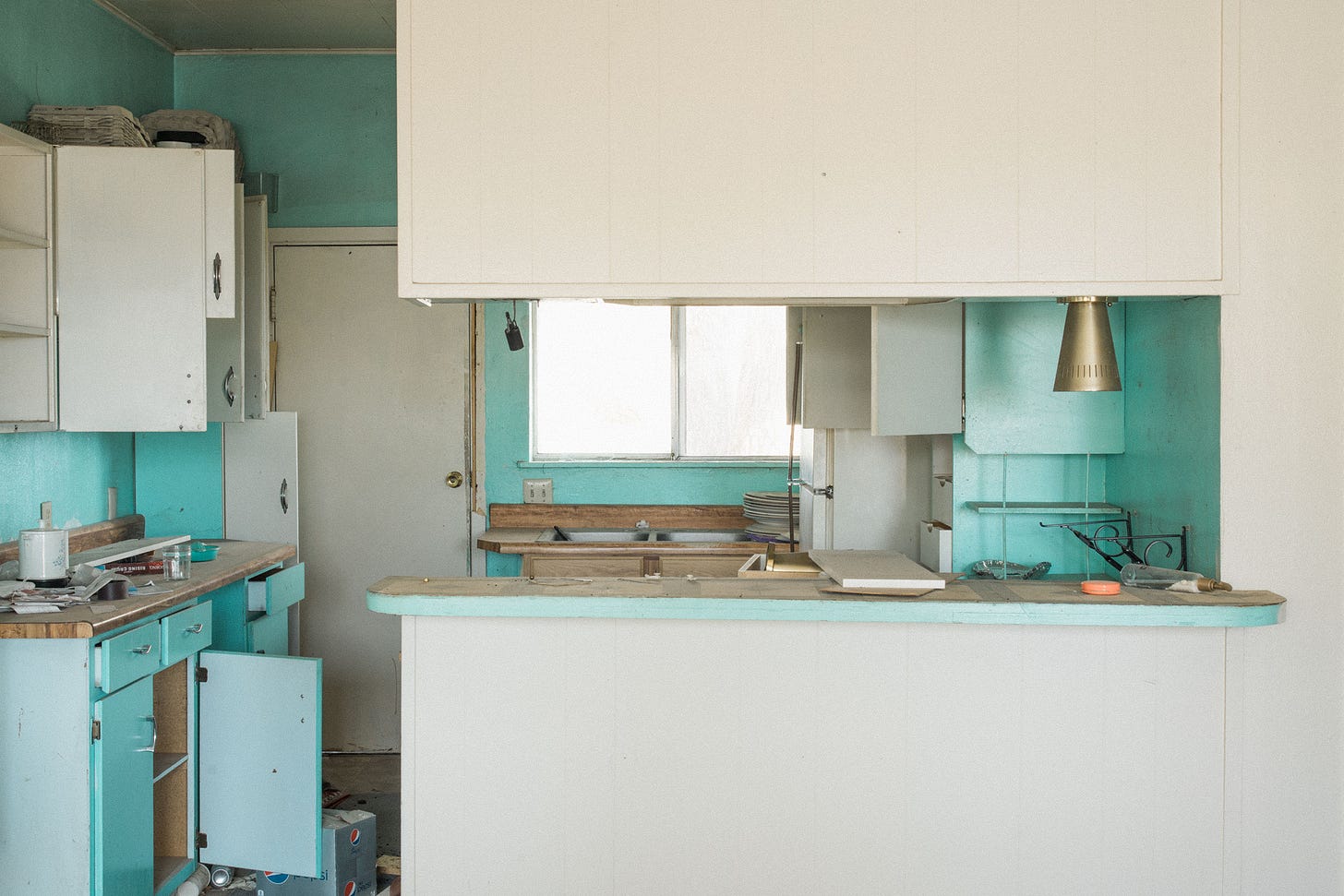
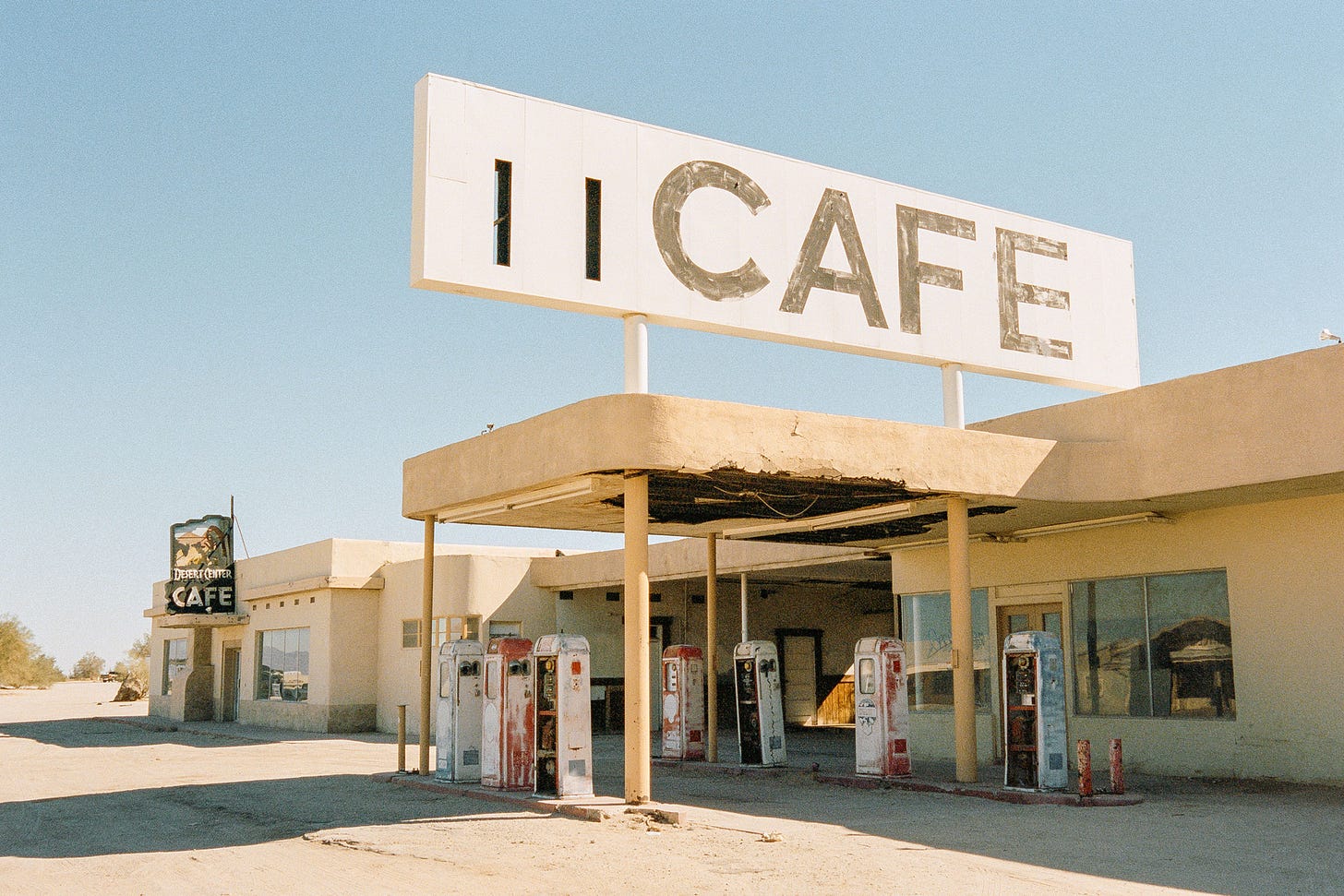

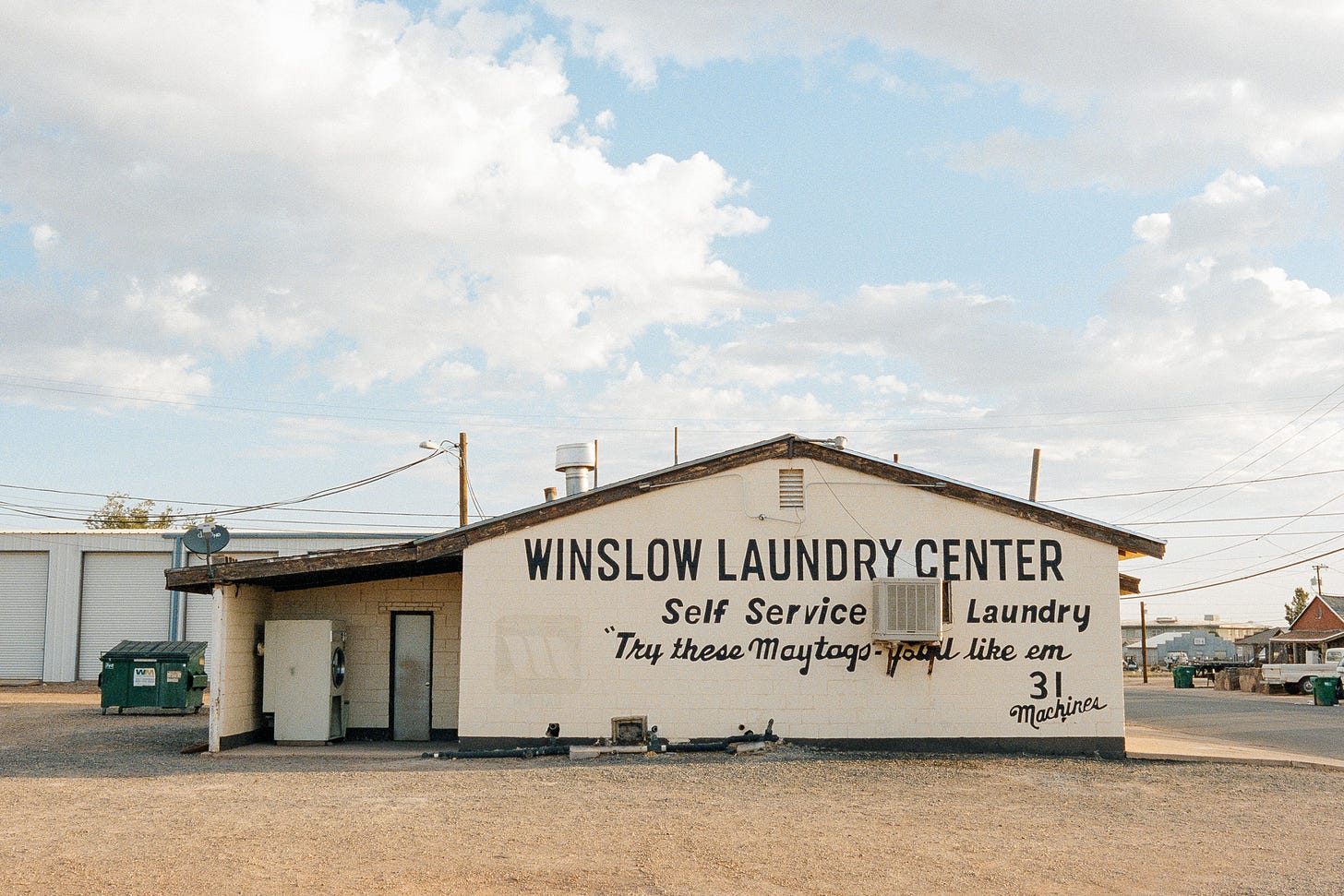





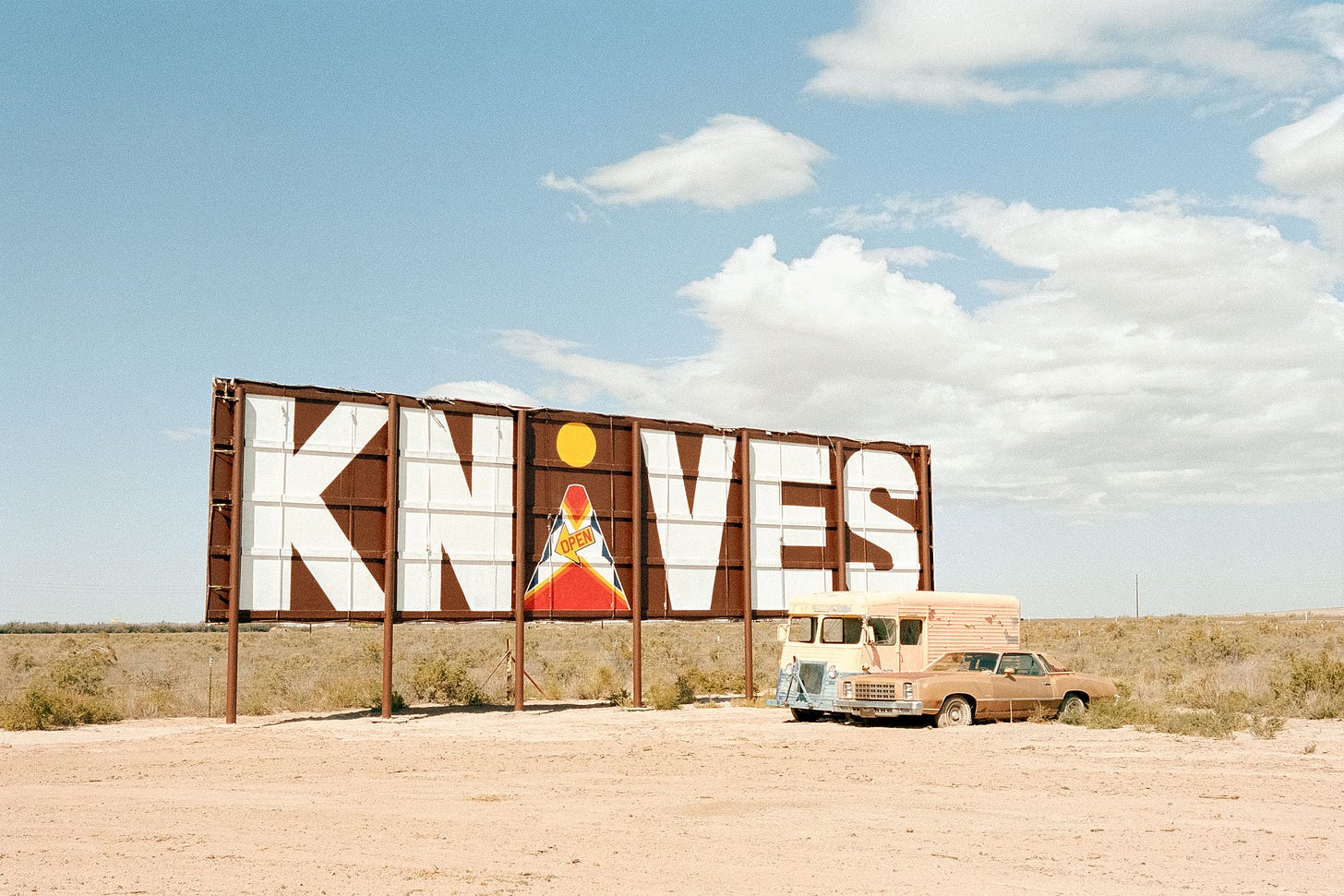
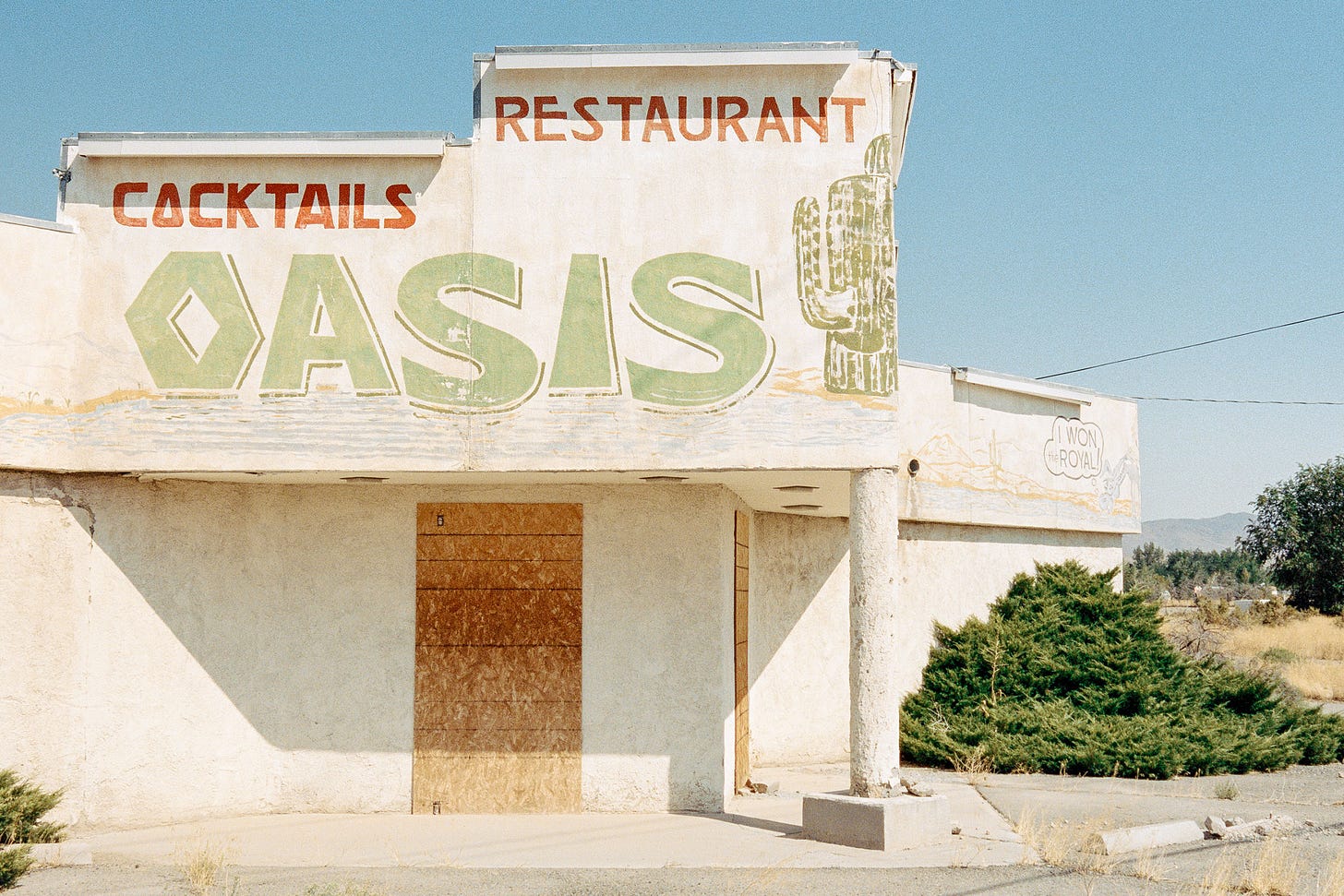




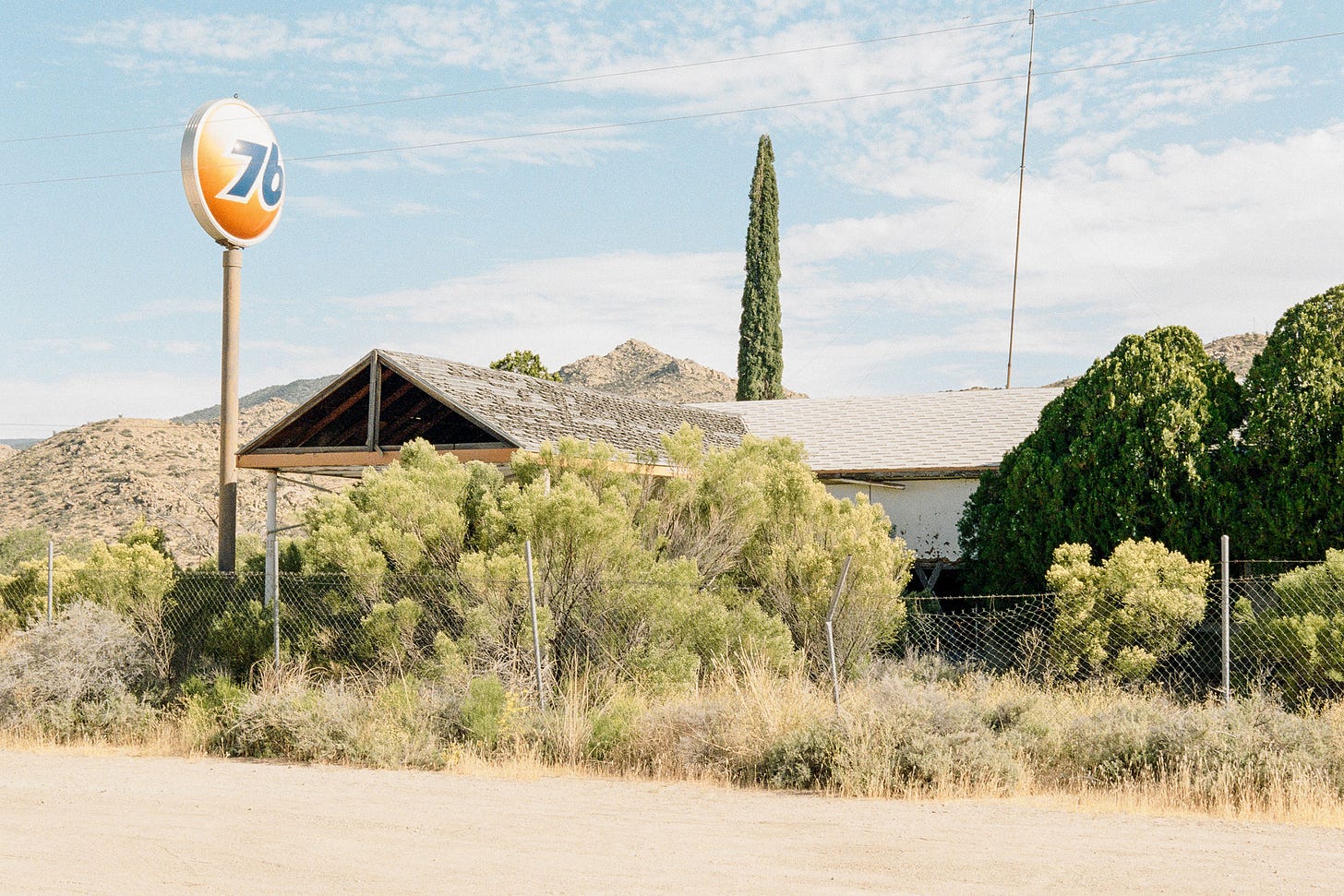

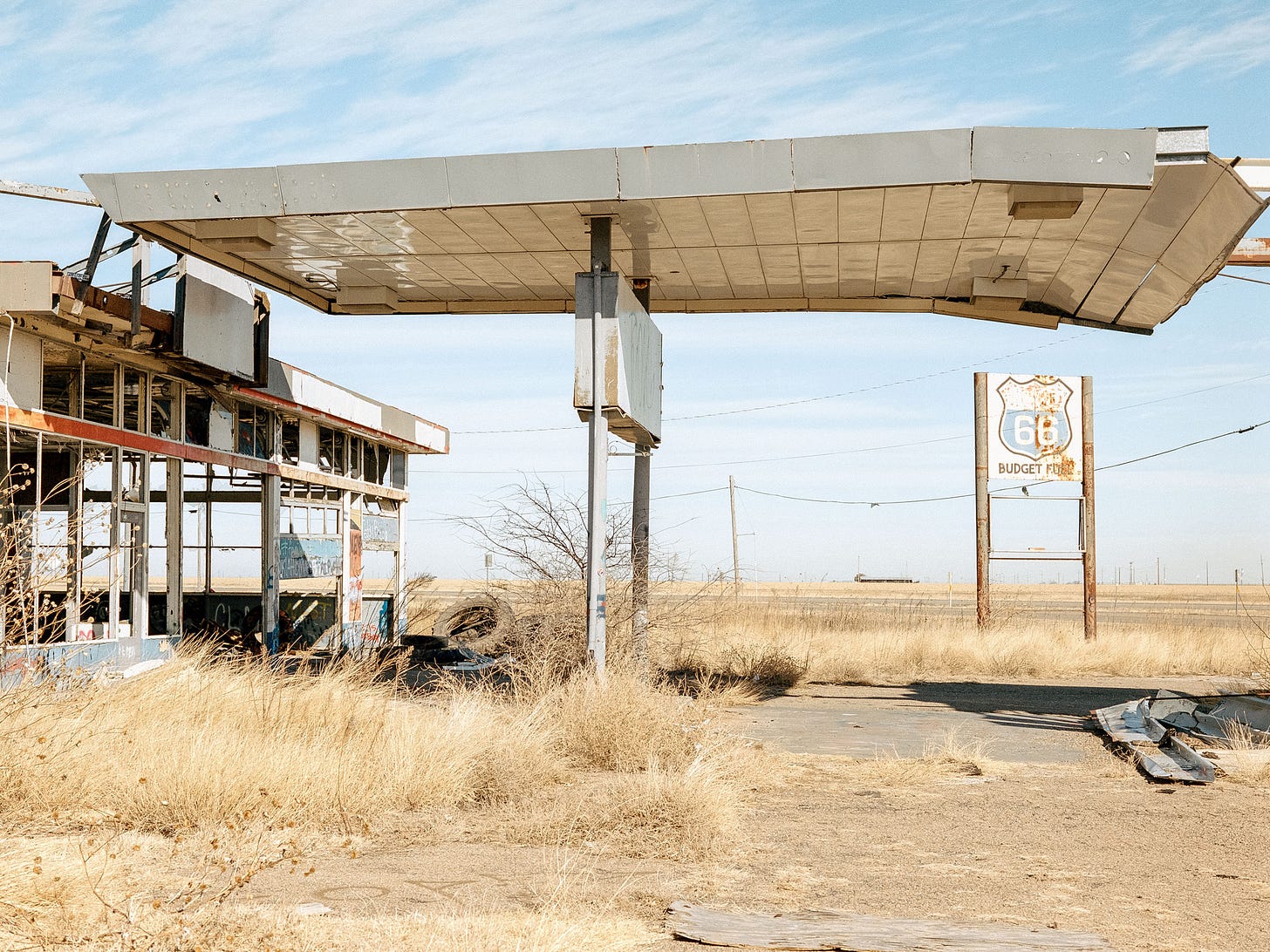

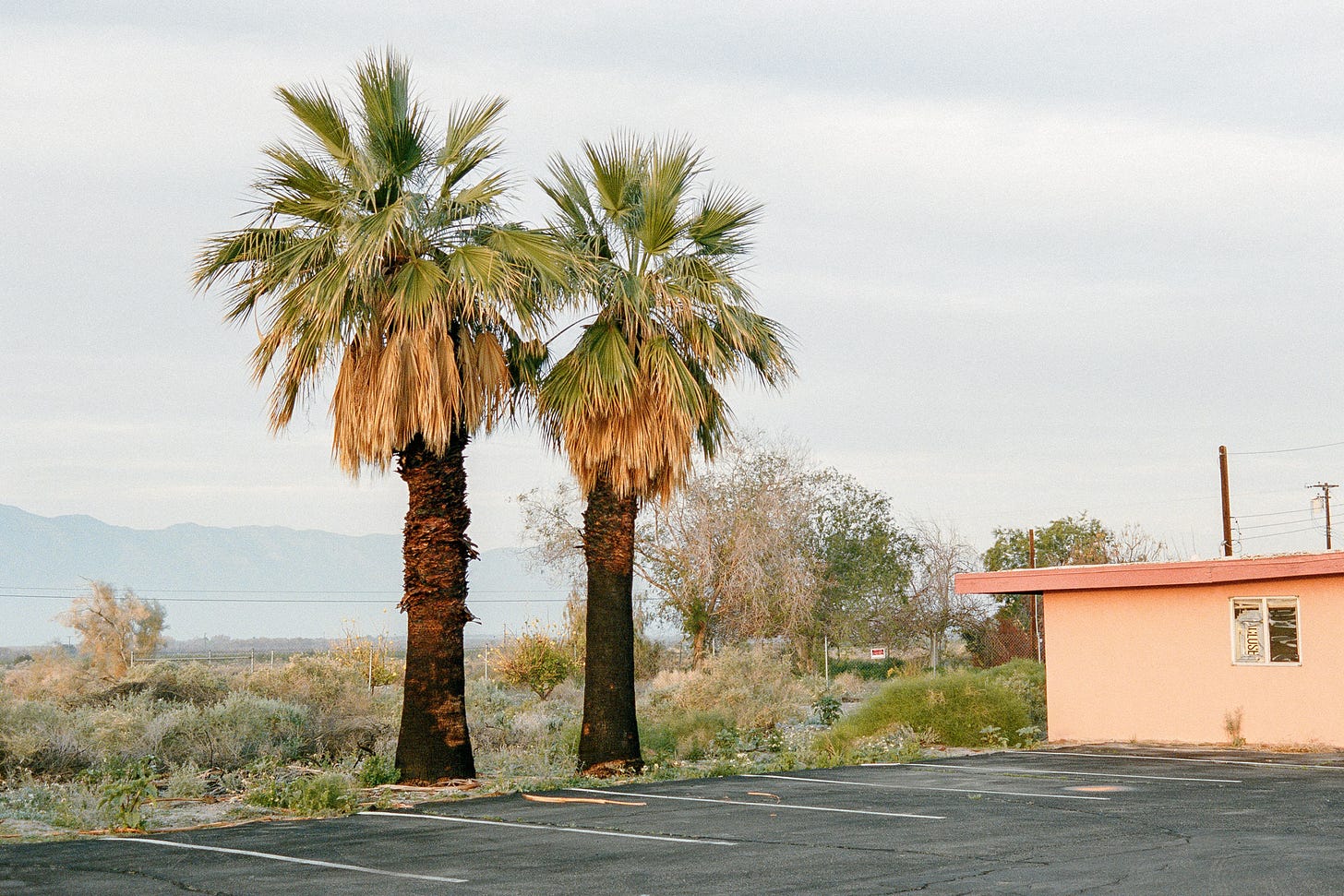
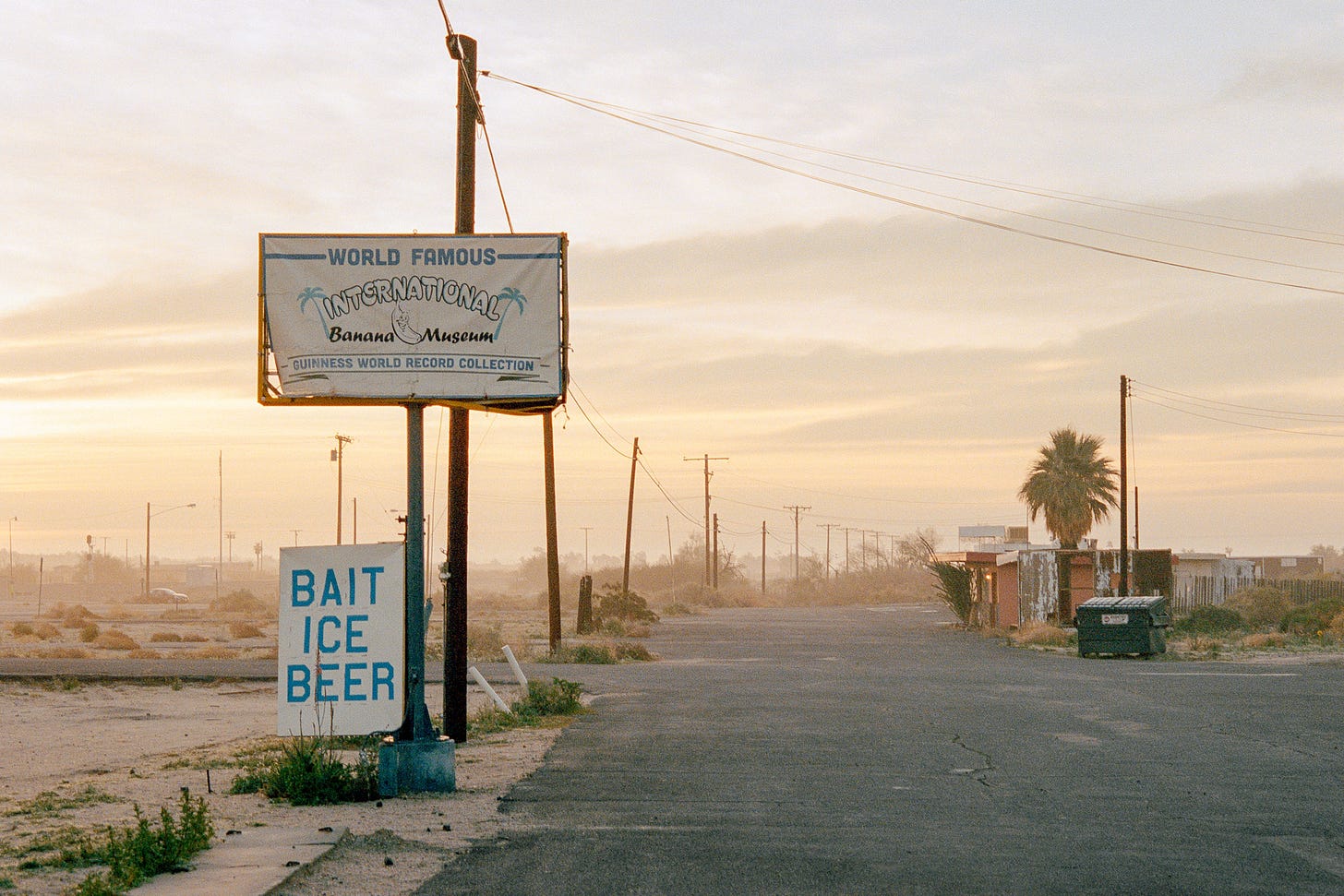

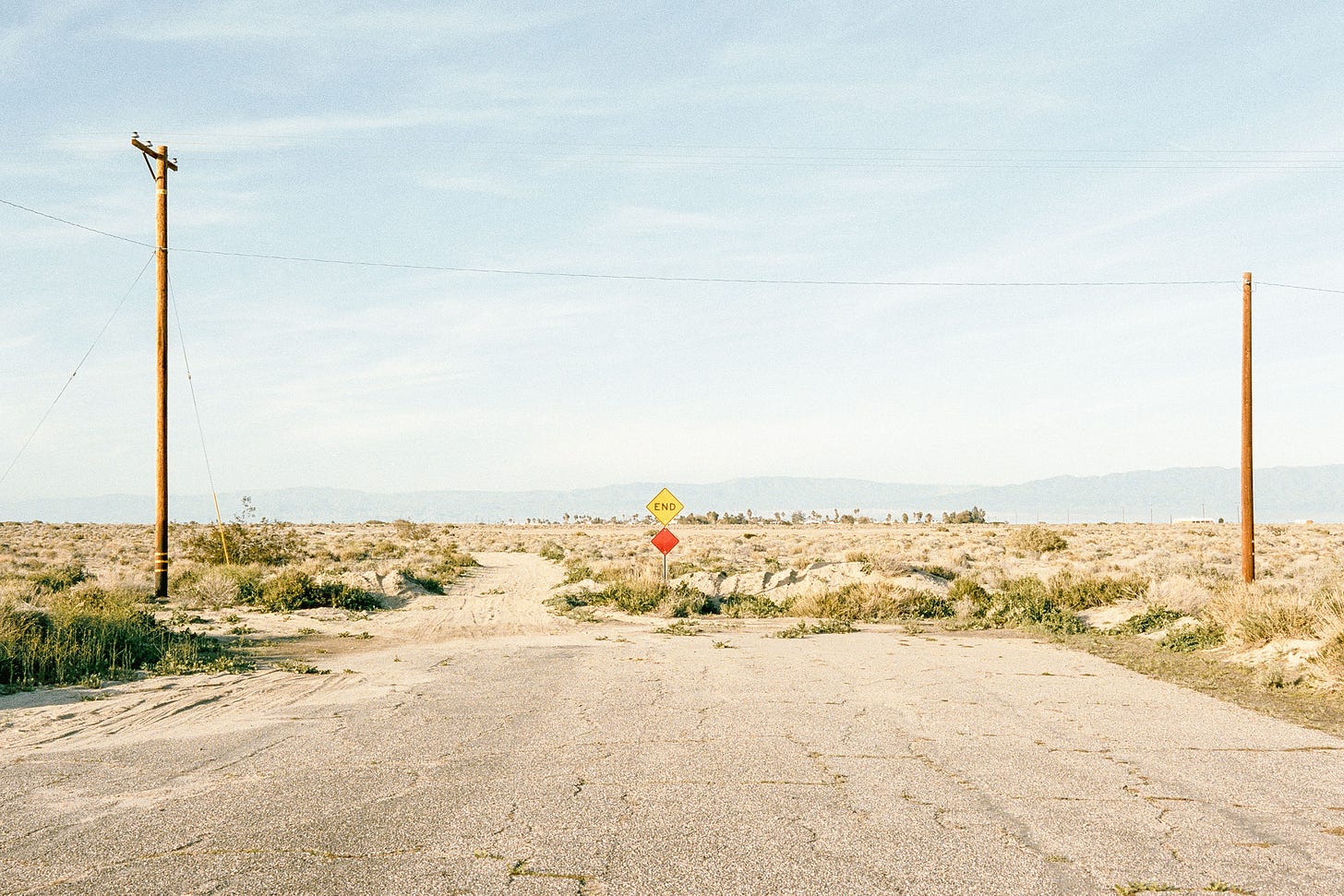

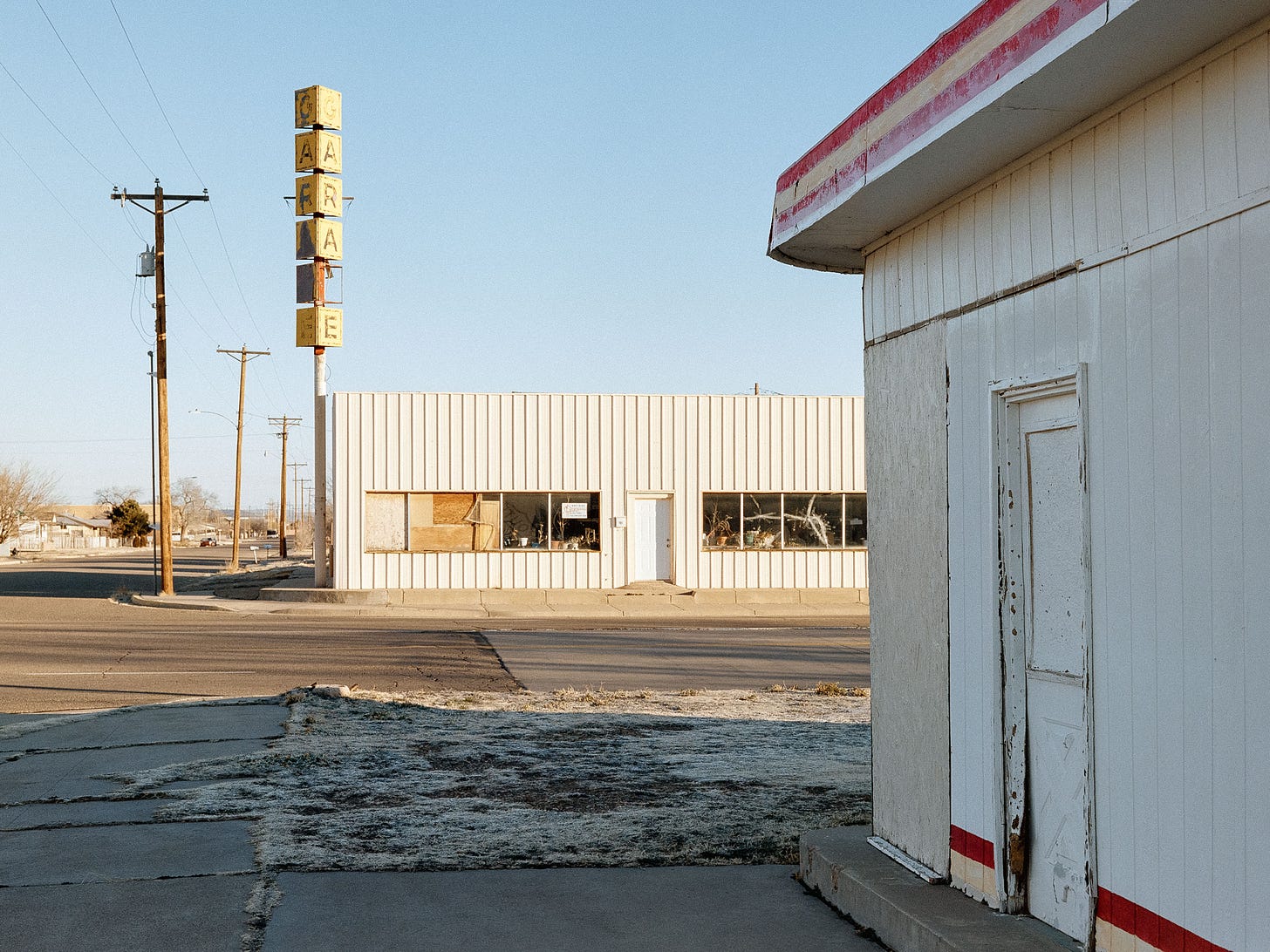

I'm really enjoying this interview Noah, it's interesting learning about Kyles early approach and how it evolved to create An American Mile. Thank for posting this.
This is terrific. Especially glad you included the earlier, traditional approach to landscape. The new ones benefit from that work, especially in terms of composition.